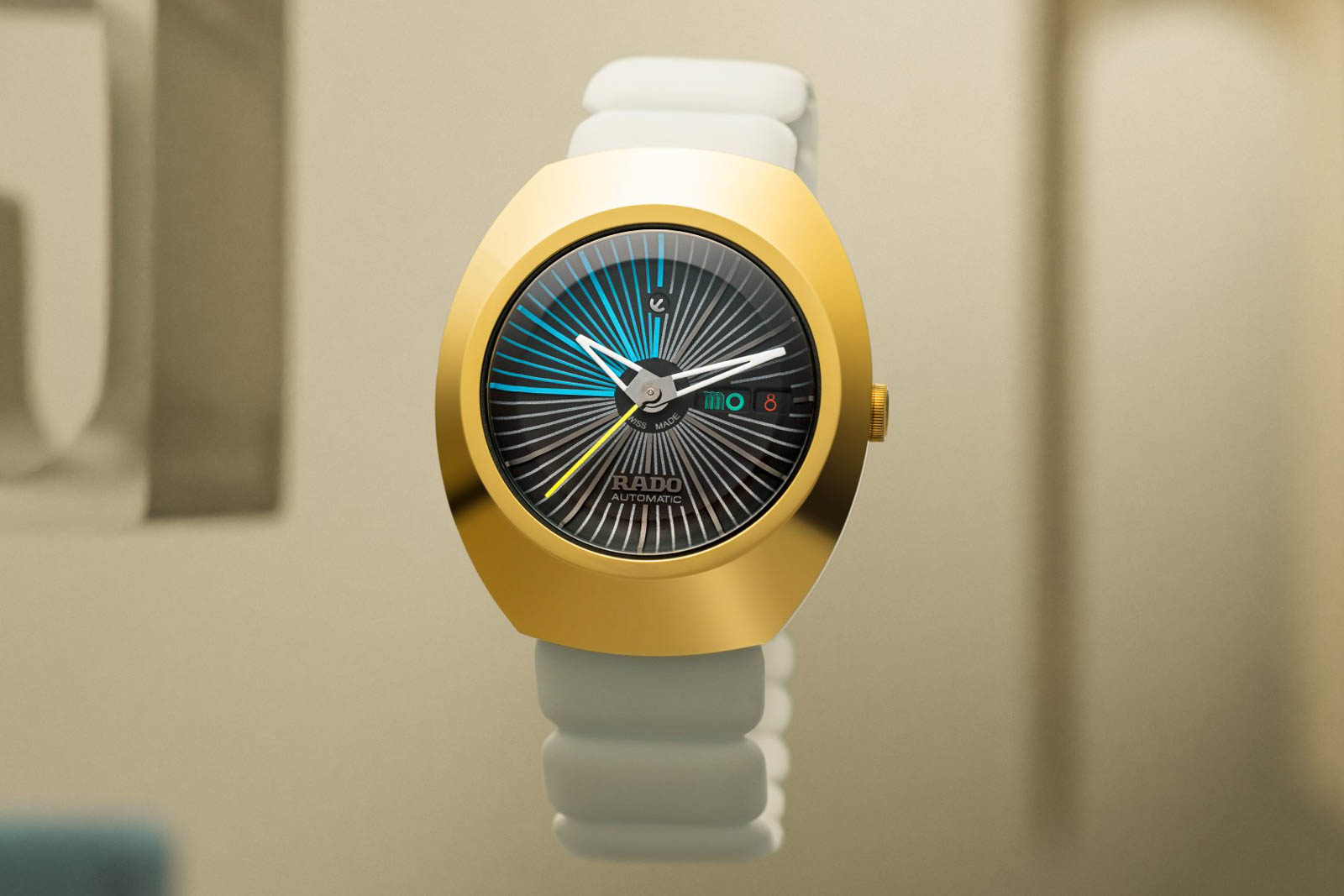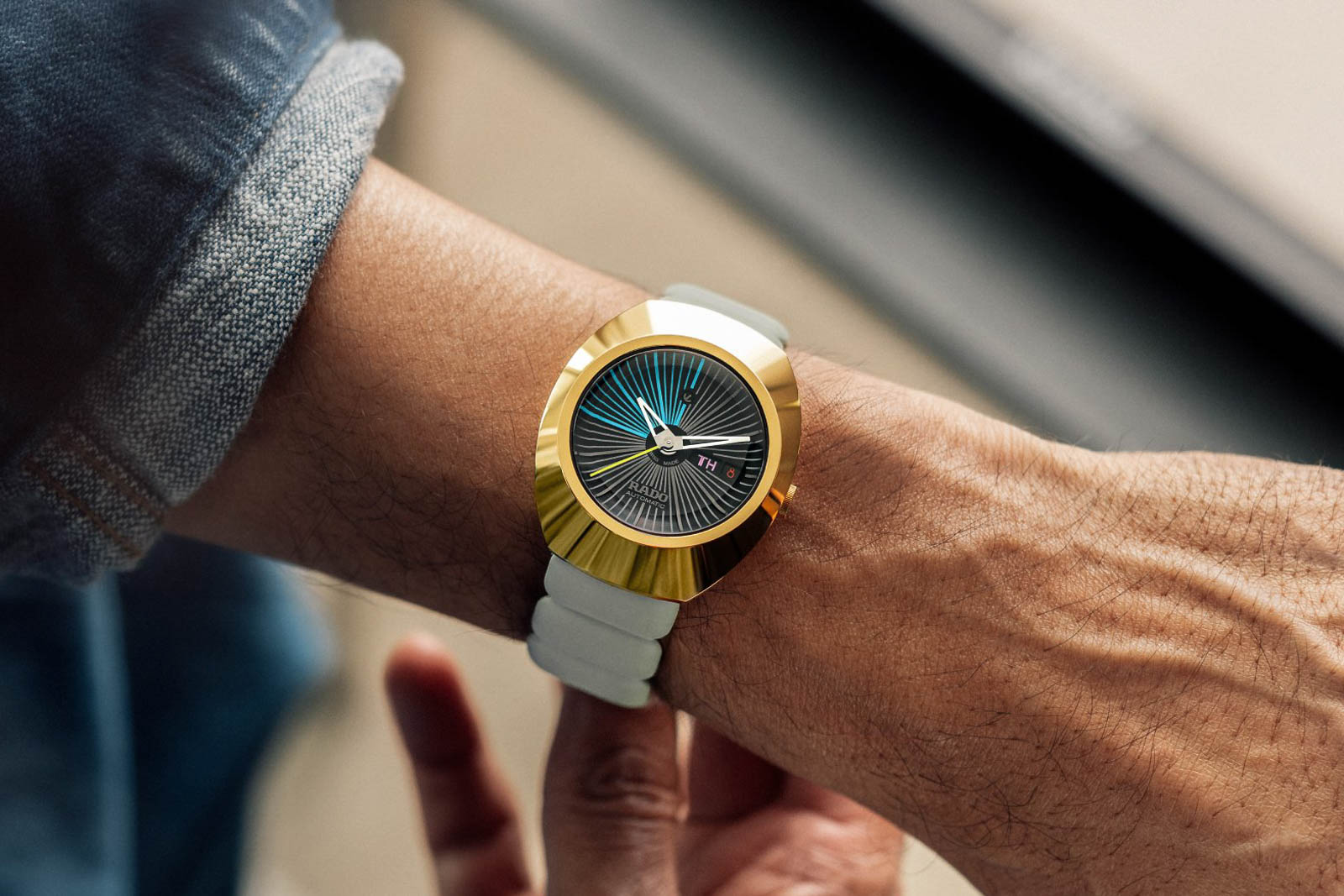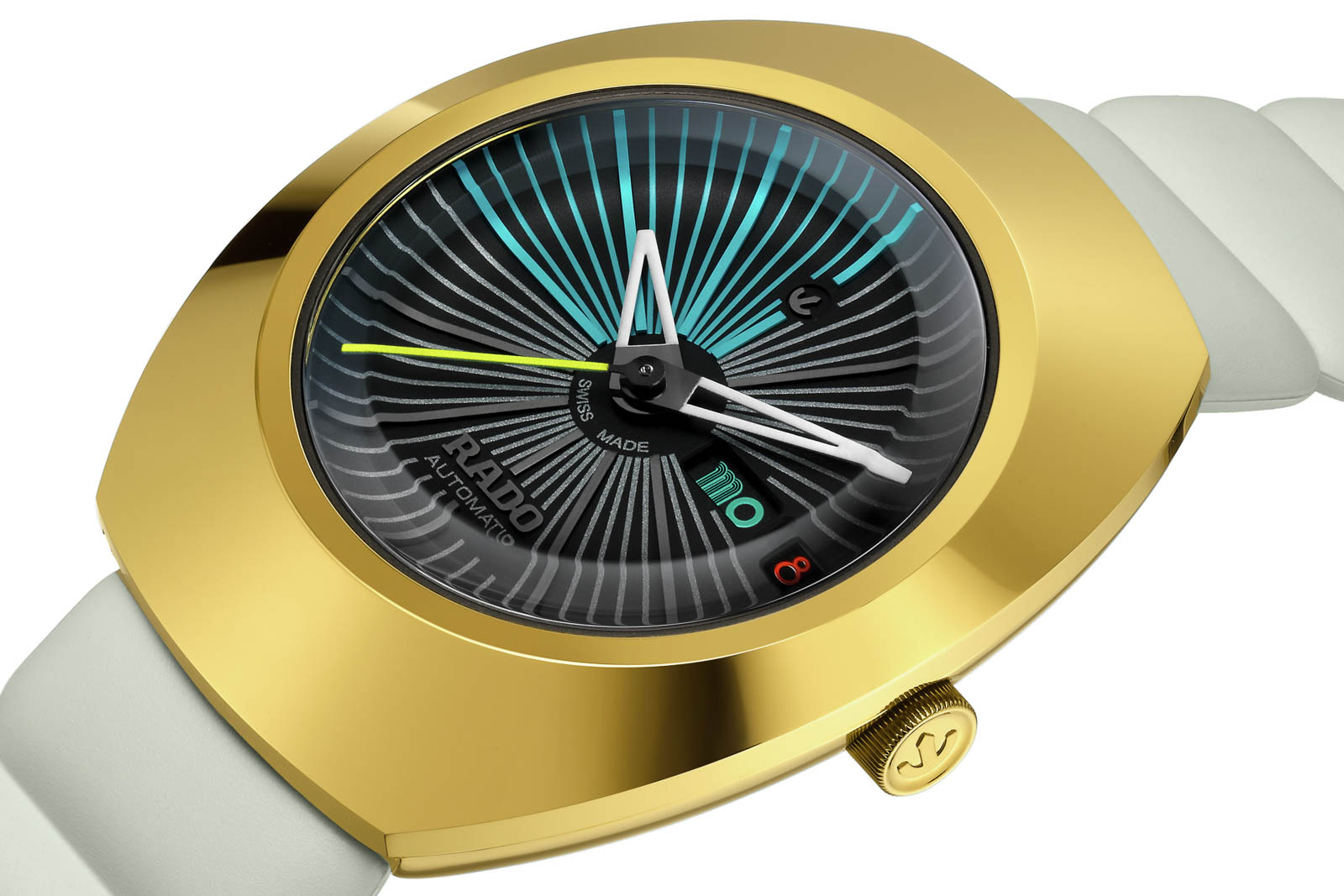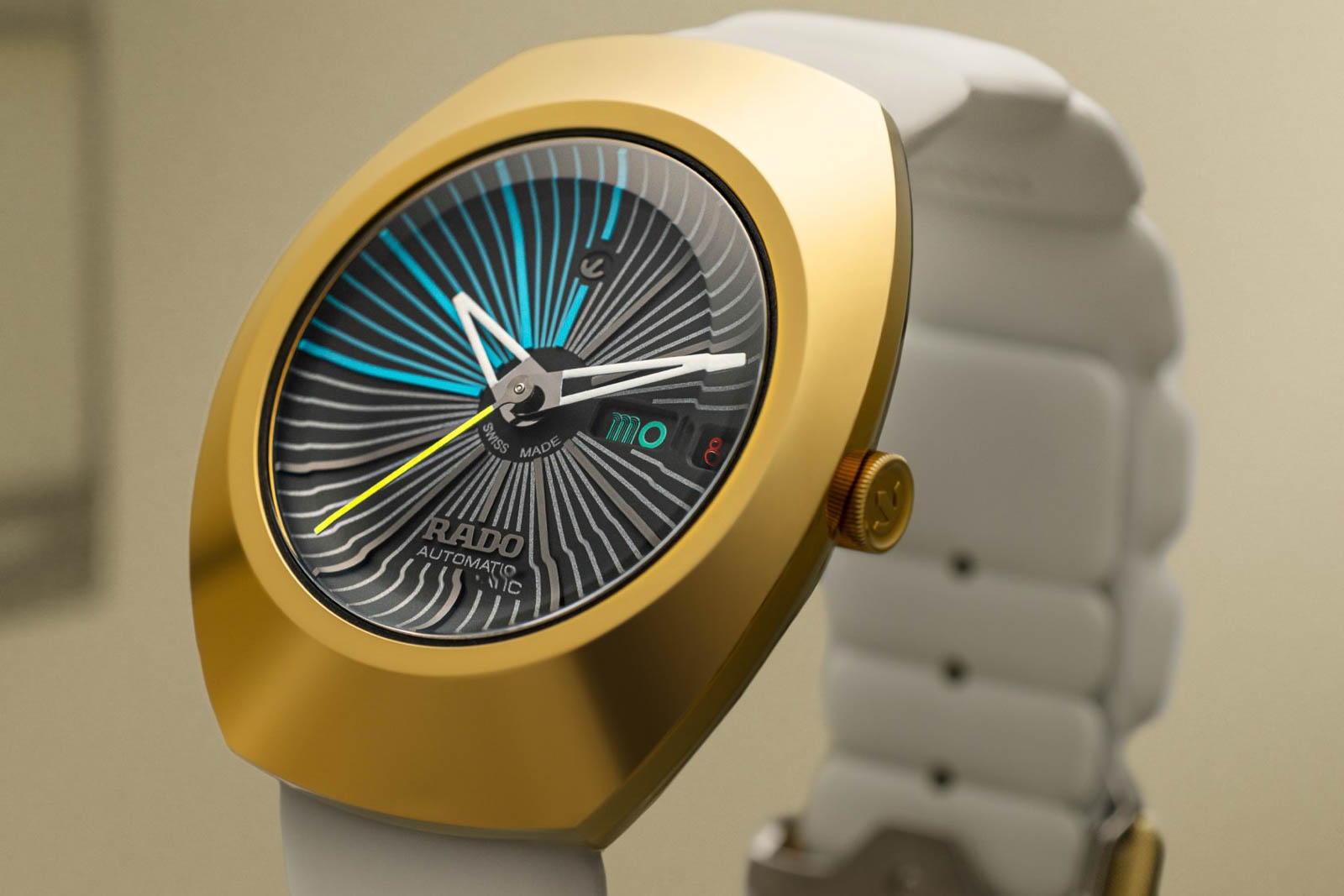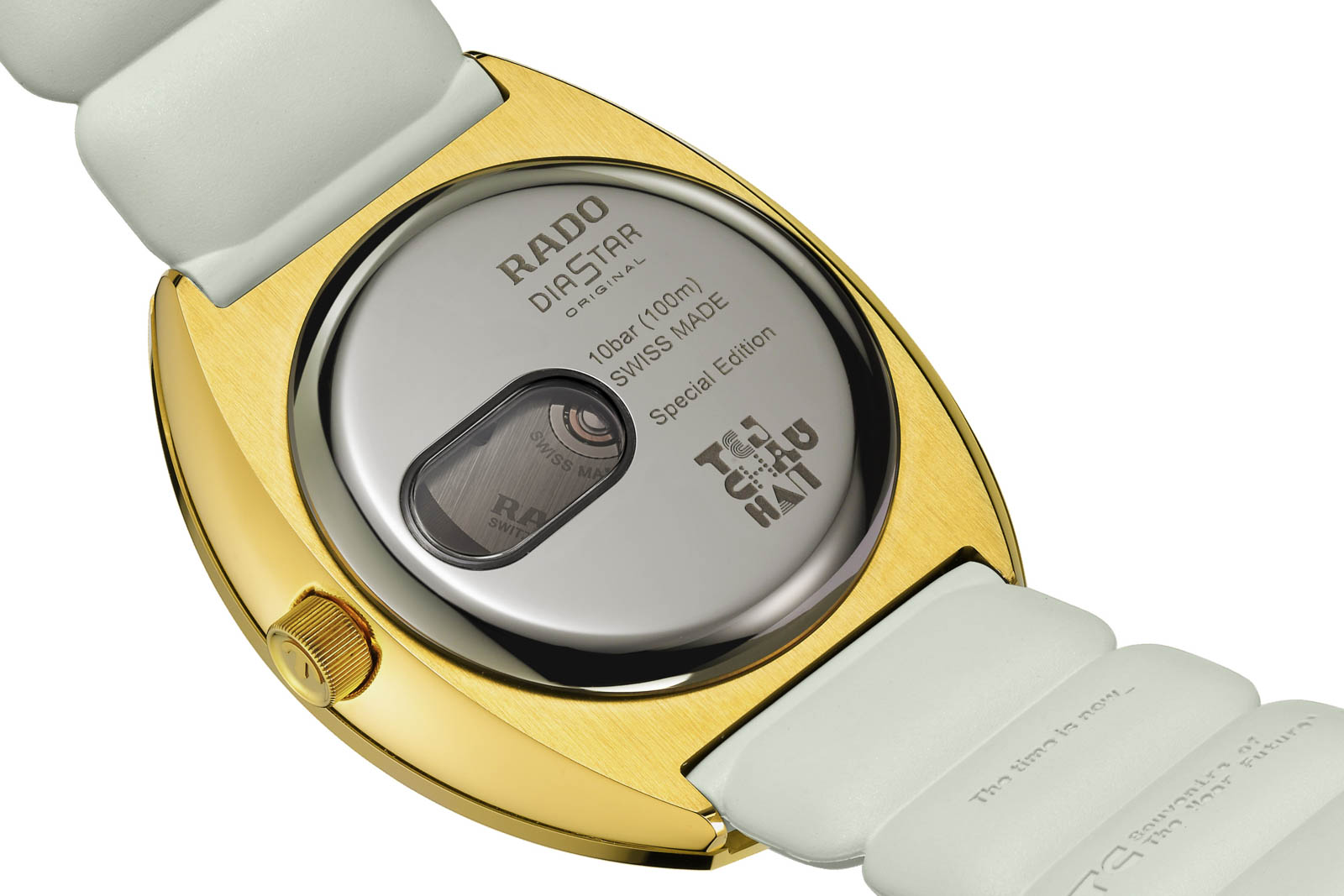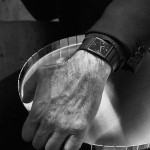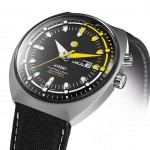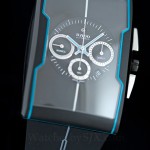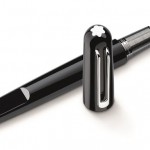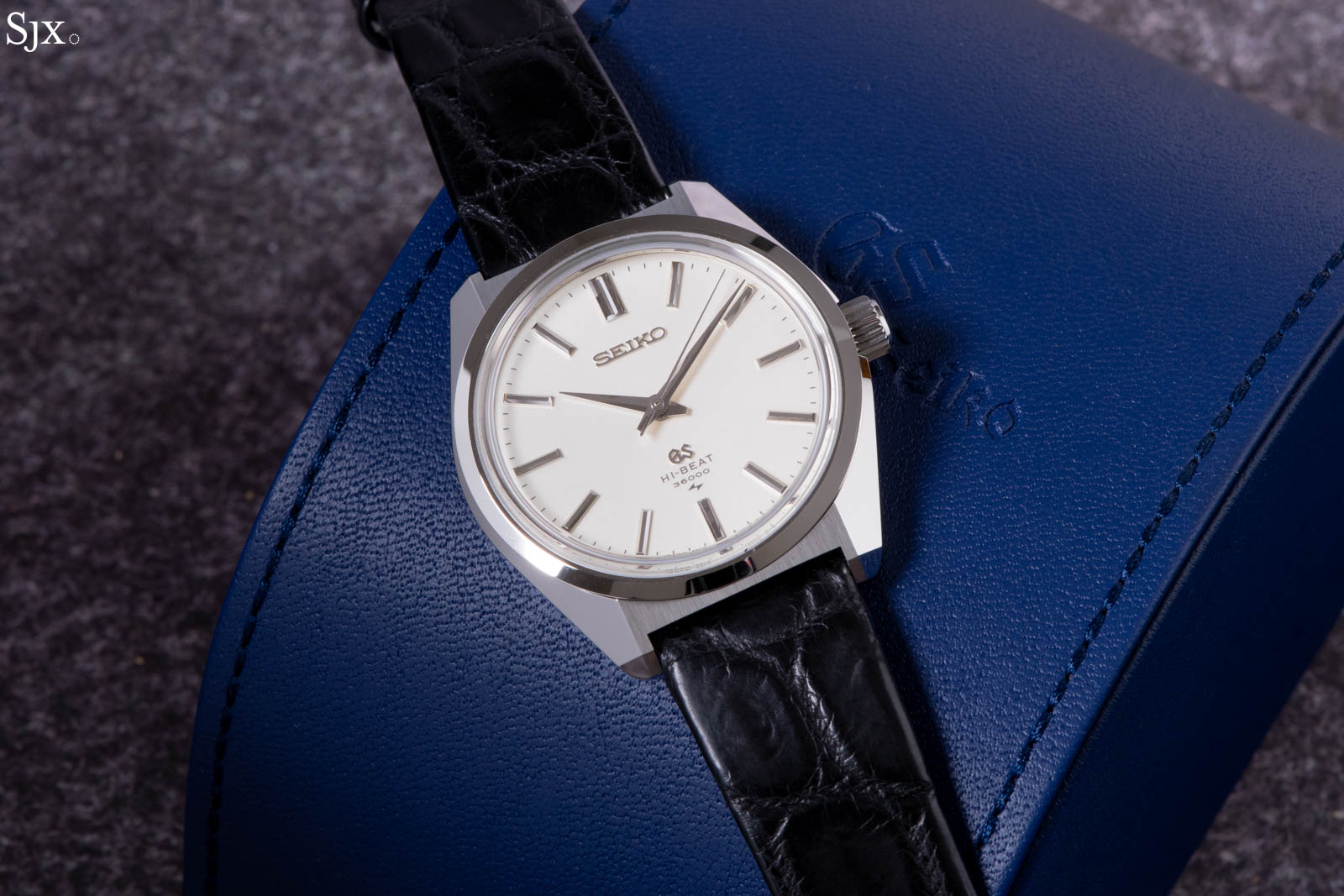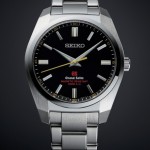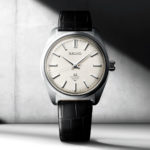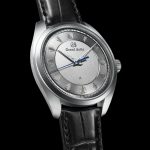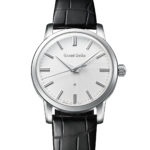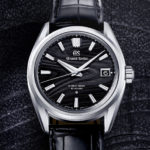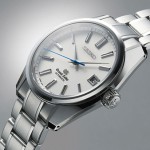Grand Seiko announced in September last year a vintage remake inspired by the 45GS of 1968, the Heritage Collection 45GS Re-creation, which was launched as the SLGW005 in steel and the SLGW004 in yellow gold.
In contrast to the many recent Grand Seiko releases with modern styling, the 45SG Re-creation is refreshing in being a revival of an iconic design, right down to the double-signed dial. Yet, the model also sports the brand’s latest generation manual-wind movement, the 9SA4. As the more accessible model of the two – retail is a little under US$10,000 – the steel SLGW005 deserves a closer look to understand how it smartly melds old and new.
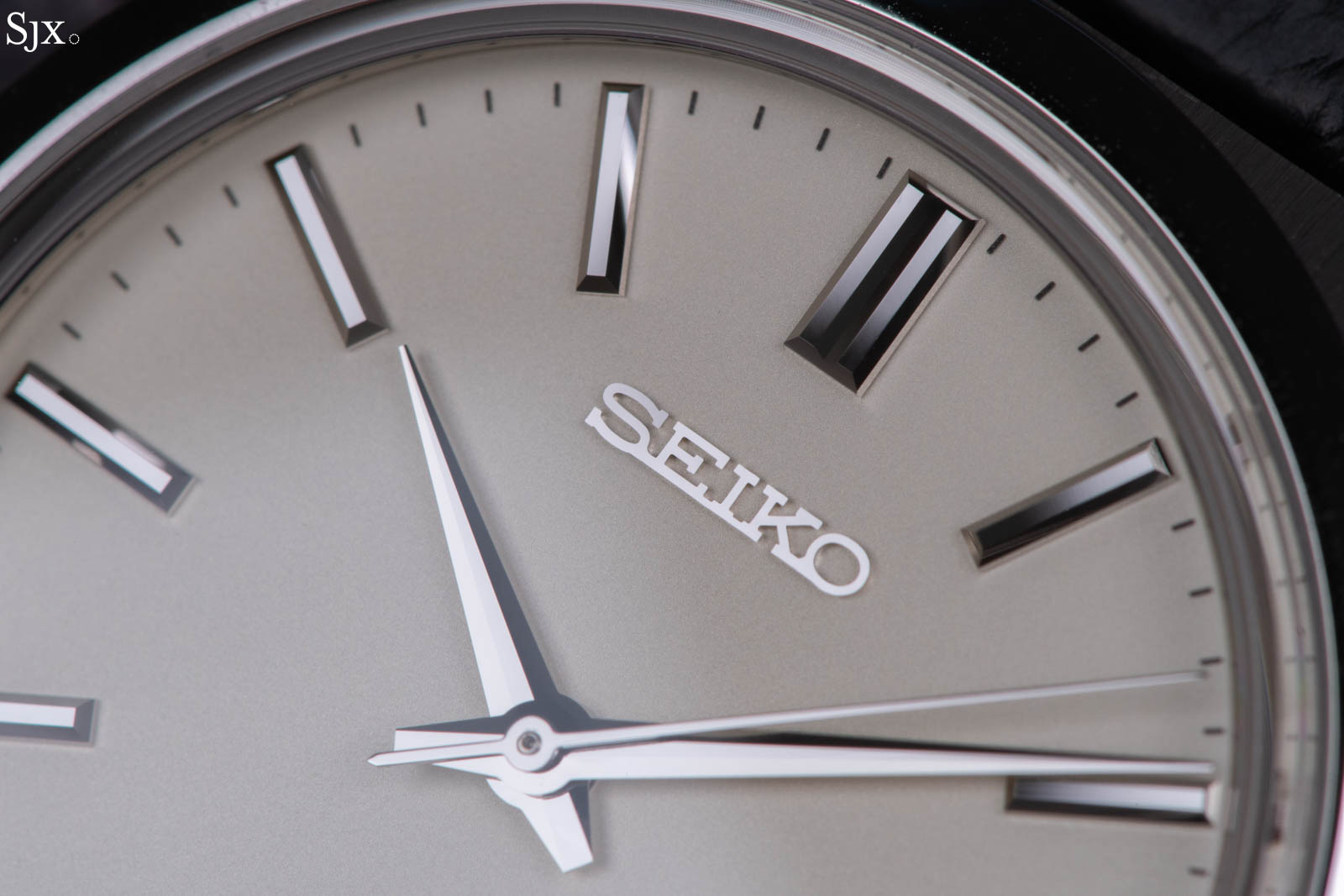
Initial thoughts
Aesthetically, the SLGW005 stands out as a distinctively vintage design, from the case and dial to the buckle. This is all the more so since it is the first release since Grand Seiko’s rebranding in 2017, when all models eliminated “Seiko” in favour of only “Grand Seiko”, to feature the brand’s historical double-signed “Seiko” and “GS” dial. I am personally fond of this detail, as the double logo balances the dial aesthetically. But preferences aside, the external components are indeed excellent, from the dial work down to the faceted case.
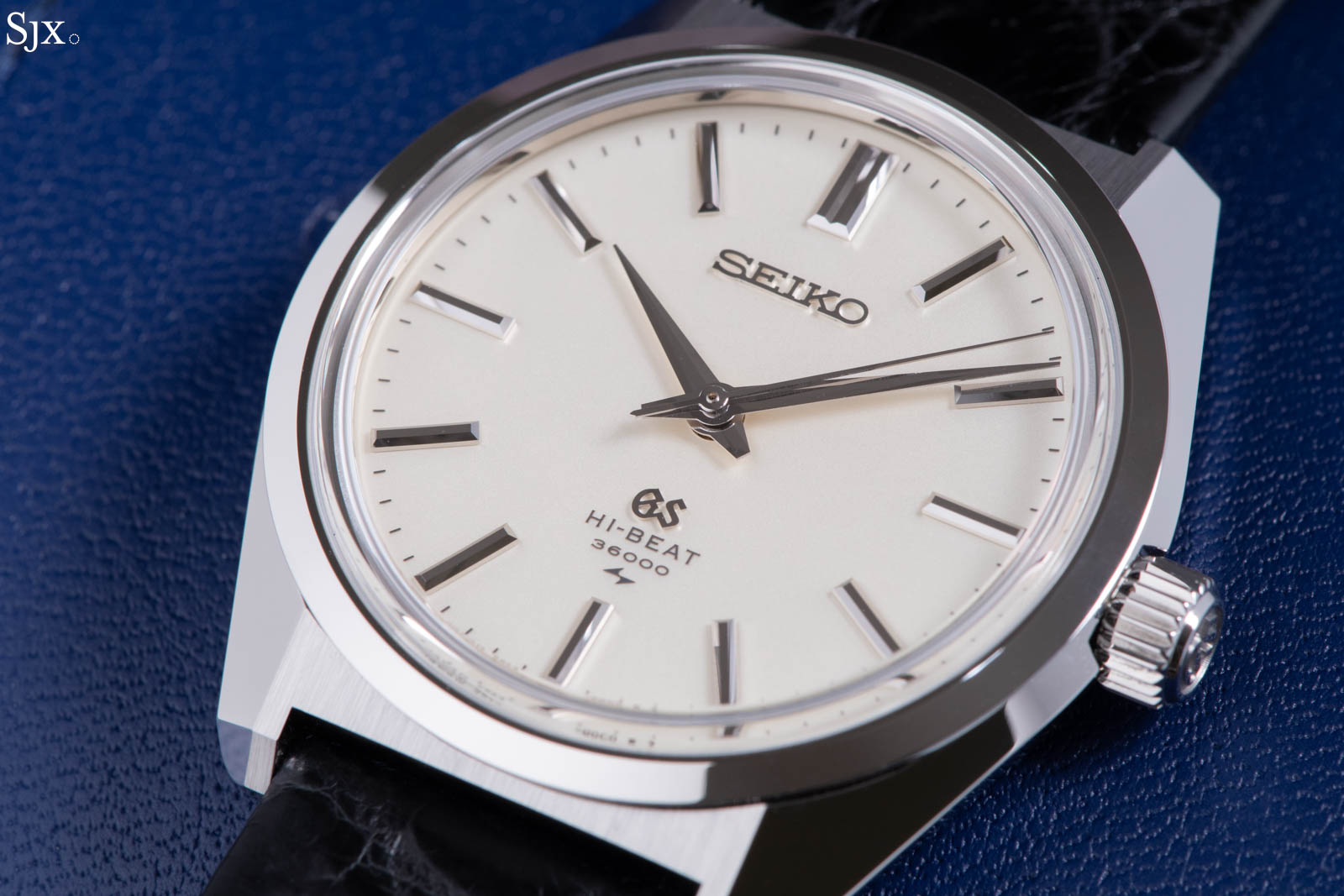

Despite the traditional exterior, the internals are modern – almost paradoxically so. Sporting the brand’s proprietary Dual Impulse Escapement, the 9SA4 inside is entirely different than the 1960s cal. 4520 found in the 45GS. On paper, it is a high-spec manual wind movement with intrinsically great features such as a freesprung balance wheel with an overcoil hairspring. However, I personally have a slight reservation of the use of such a modern movement here, which feels slightly disconnected from the spirit of a vintage remake.
That said, a movement alone does not make a watch, and the SLGW005 is greater than the sum of its parts. It is an attractive package for those who enjoy the traditional boxy design, but wanting the amenities of a modern movement. Priced at US$9,700 – that’s US$1,000 less than the titanium SLGW003 using the same movement – the steel SLGW005 is good value as a standout release within Grand Seiko’s recent catalogue.
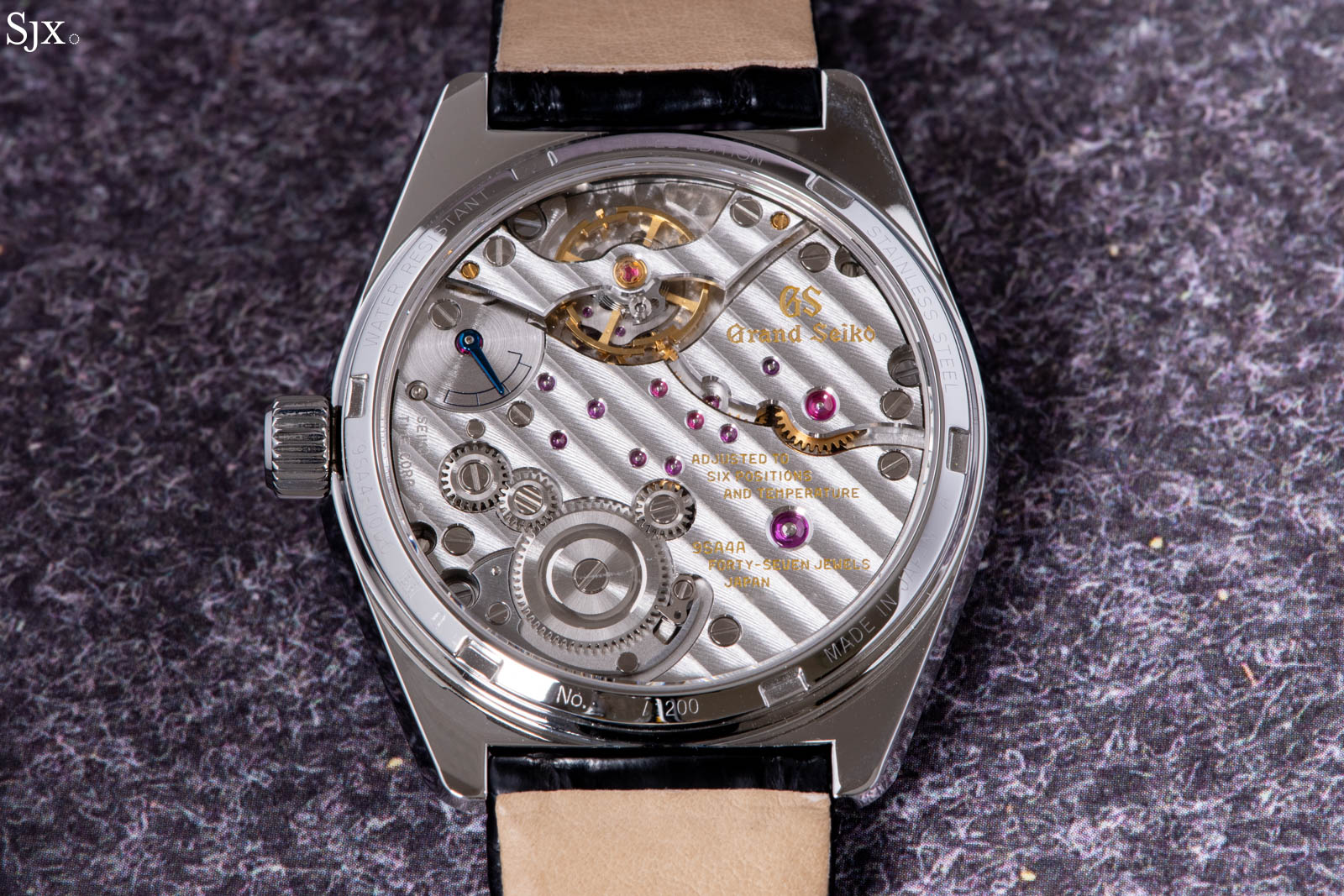
Faceted case
At a glance, the SLGW005 appears superficially identical to the vintage 45GS, but scaled up to 38.8 mm compared to the 36.5 mm original. On paper, the increased diameter appeals to modern tastes, with most dress watches falling within this size. However, the SLGW005 wears smaller than the measurements suggest. This is mainly due to the distinct case design and how it frames the relatively small dial.
Wide, mirror-polished flanks run across the sides of the case which meets the brushed, flat facets between the lugs. Looking straight at the dial, the widest edges of these case flanks protrude slightly outward of a relatively small bezel, which in turn frames a boxed sapphire crystal
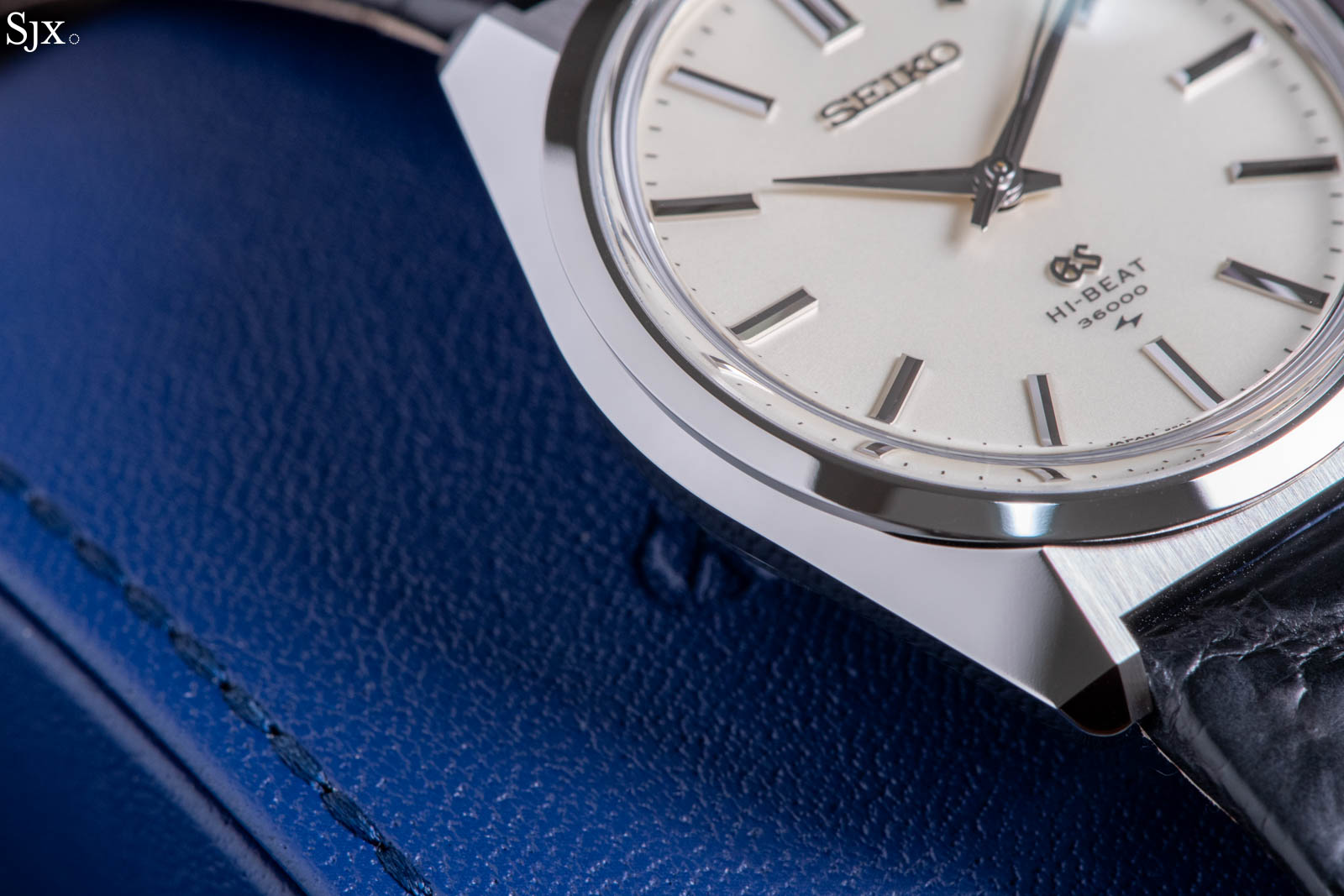
Cumulatively, the proportions make the dial appear smaller than it is, creating a relatively compact appearance for a 38.8 mm wide case. And thanks to the tapered construction, the overall height of 10.4 mm also feels relatively slim, as the case sits low on the wrist with the protruding boxed sapphire crystal.
The case is of a tripartite construction – the bezel, case middle and case back being separate parts. This allows the exterior facets of the case to be Zaratsu-polished, which involves using a Sallaz lapping machine to flat-polish the surfaces for a distortion-free mirror polish.
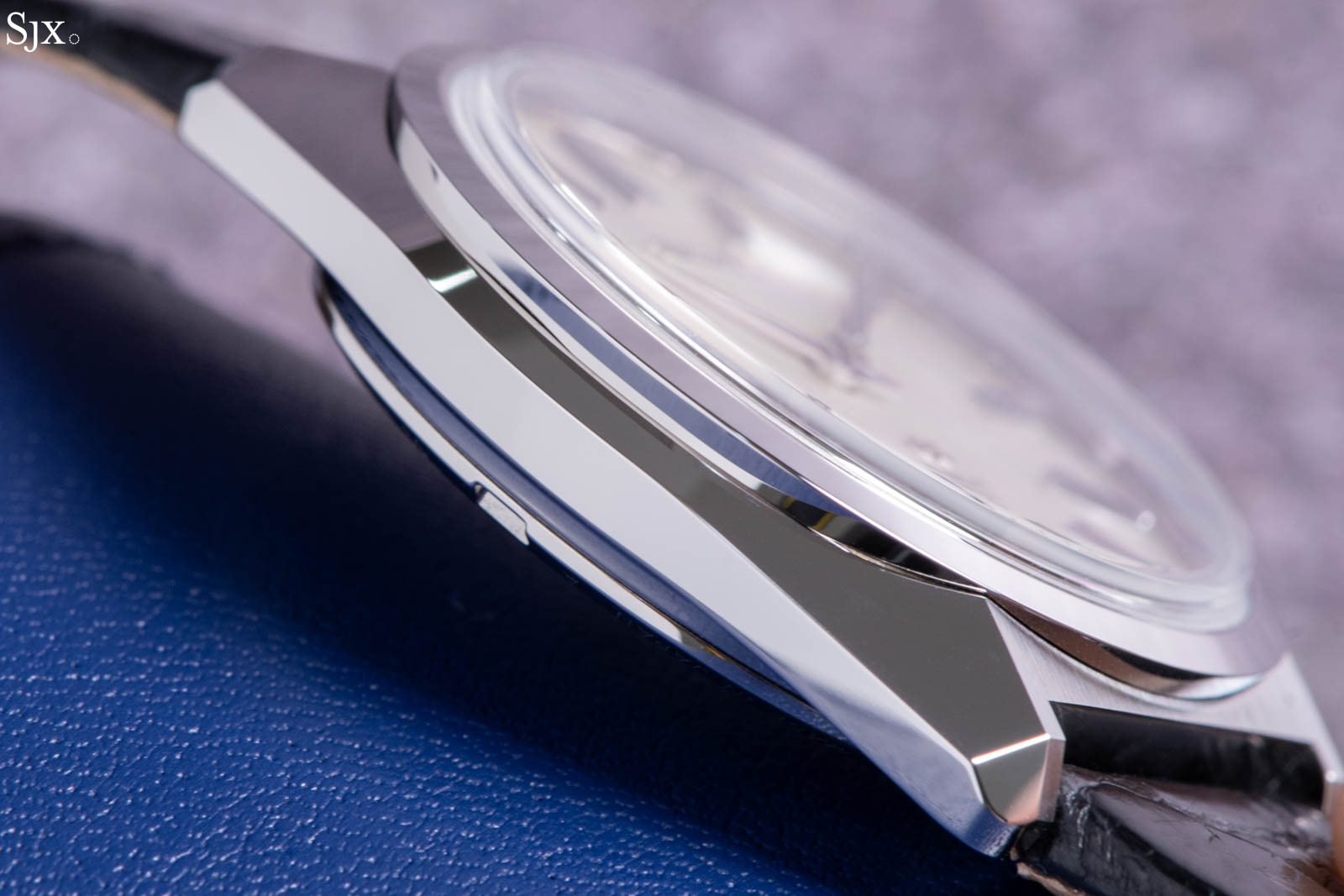
Naturally, this is an ideal application for the wide facets of the case. One nitpick however, is that I wished the edges where the facets meet could be distinctly sharper as they are very slightly rounded, which softens the overall angular appearance.
However, this also increases the overall durability of the edges from daily wear, such as when cleaning the case from smudges. Furthermore, the slight rounding is also deliberate consistent in width throughout the entire length of the edges, which demands skilled casework finish to obtain a neat apperance.
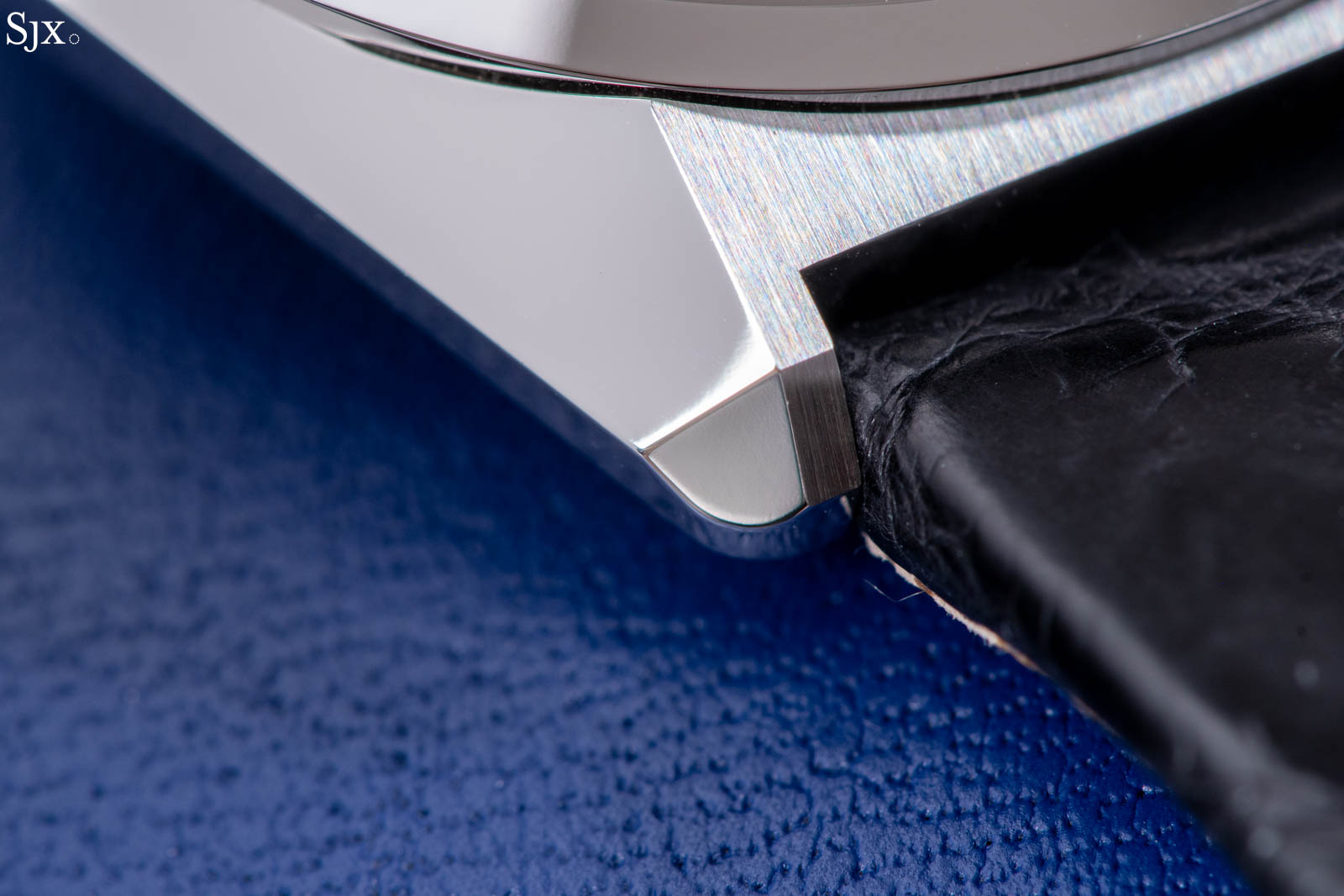
And of course, while identical in design across other Grand Seiko models, the crown is well done with a fine polished relief logo against a grained surface.
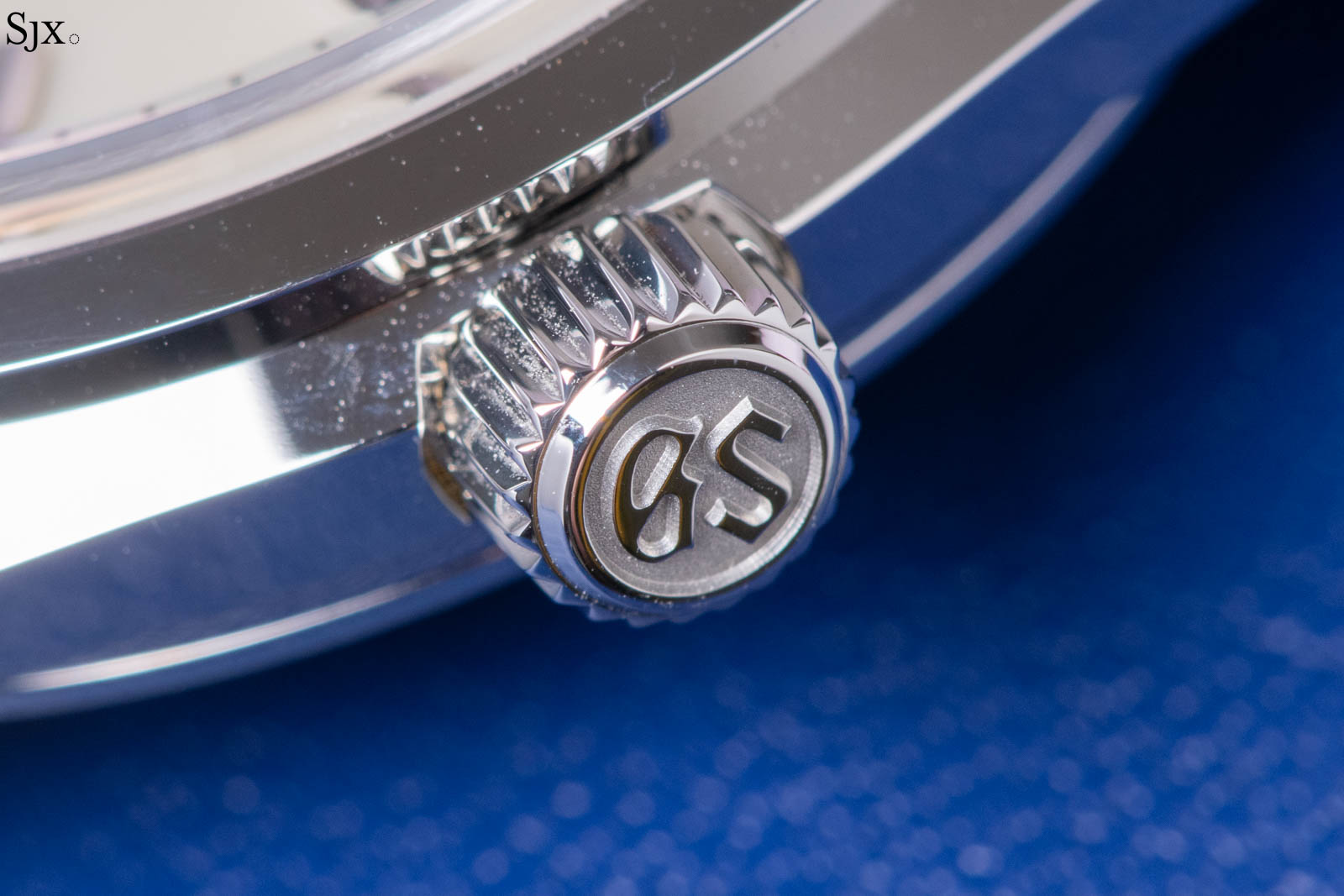
Of worthy mention is the tang buckle, with is paired by default on the alligator strap. While it is of a simple stamped steel construction, the buckle has an attractive Seiko logo embossed in relief over a stamped, dimpled surface. This finish presents a level of tangible detail that feels reminiscent of artisanal, higher-end watchmaking where the dimples are individually hammered.
Albeit slightly dated in appearance, the buckle is essentially a replica of the vintage buckle of the vintage 45GS, revealing the attention to detail in recreating the feel of the original.
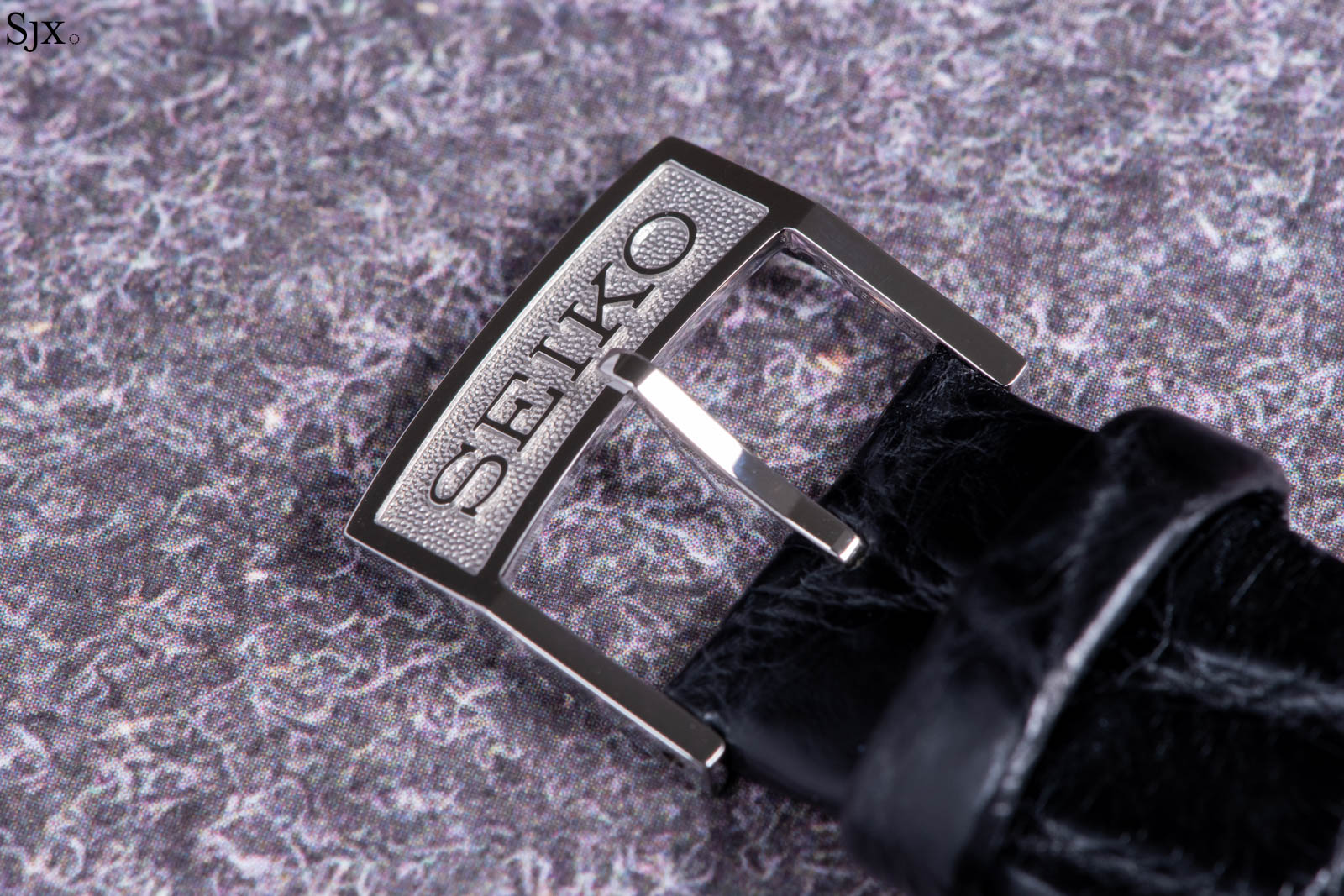
Dial tribute
In my opinion, the dial is the standout feature of the SLGW005, as a faithful nod to the 45GS. While the dial elements and quality are nothing new to Grand Seiko, the aesthetic balance is highly attractive.
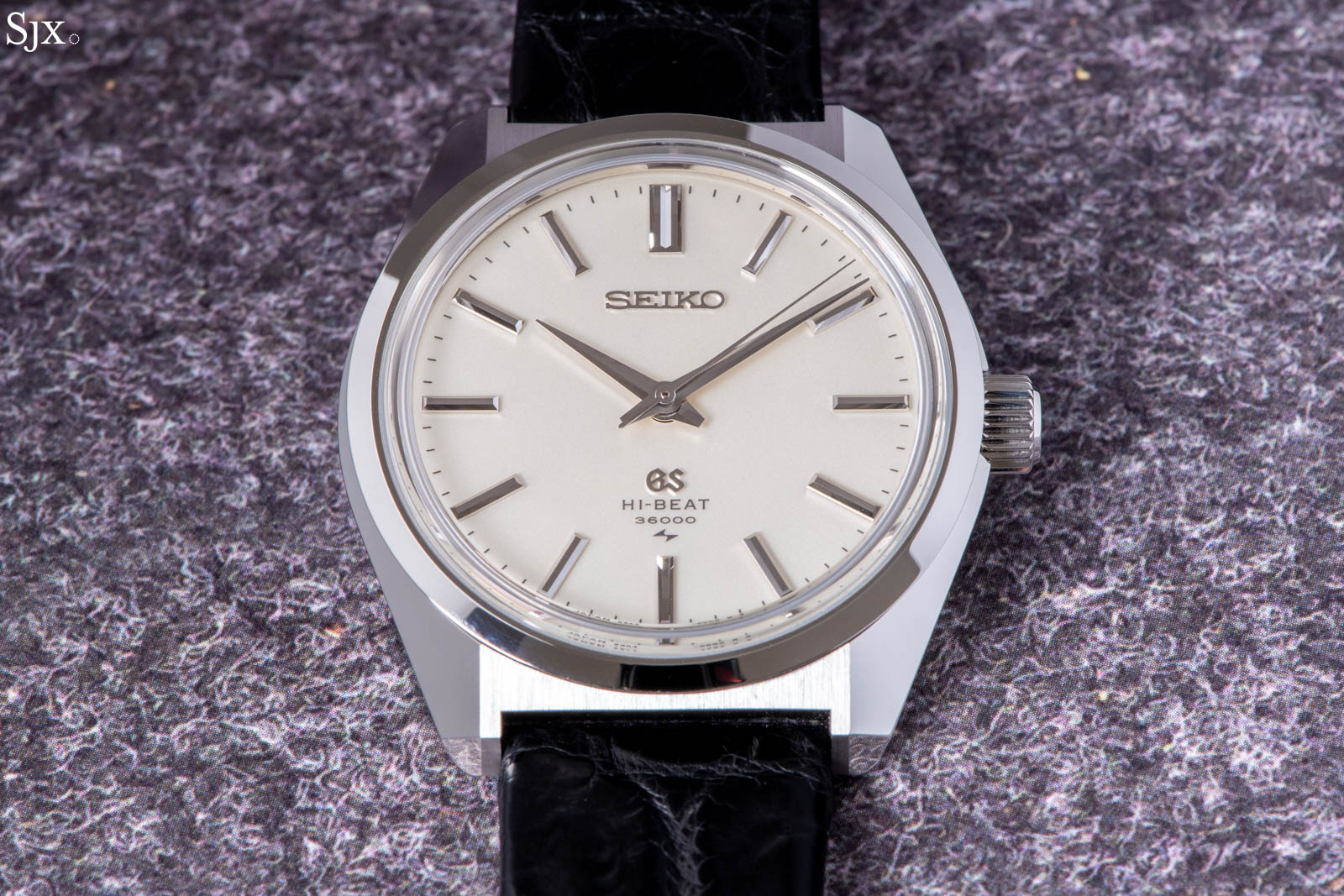
Most notably, the double-signed applied “Seiko” at 12 o’clock and “Grand Seiko” at six o’clock is reminiscent of models released before Grand Seiko’s rebranding in 2017. In my opinion, this harmoniously balances the space around the dial, especially for a simple three-hand watch.
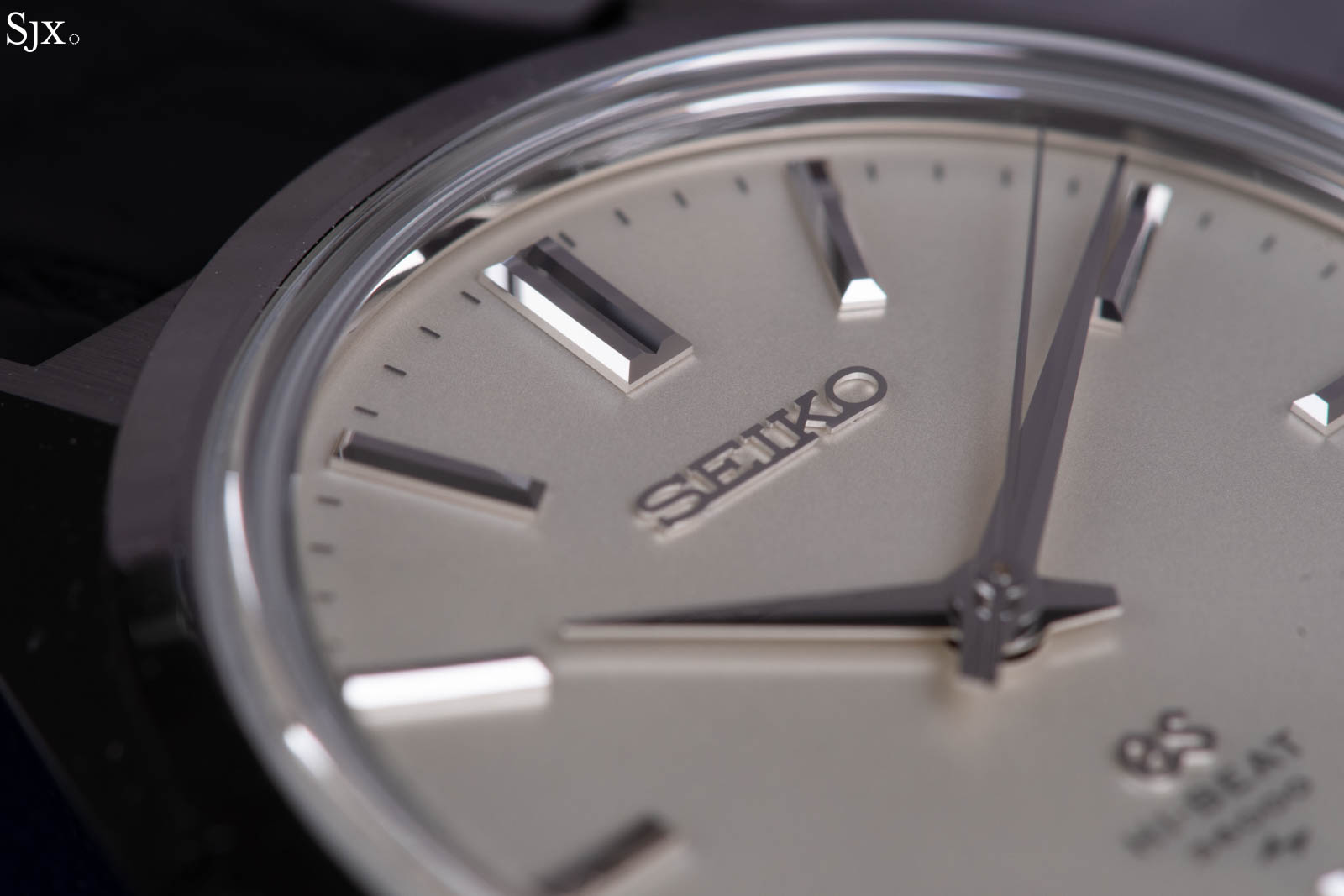
The applied Seiko logo creates tangible depth to the dial
Also worth mentioning is the lighting bolt logo at the bottom of the dial. It represents watches produced by Daini Seikosha, a rival to Suwa Seikosha. Both companies were independent but related in being part of the Hattori group of companies, which are now Seiko. Daini Seikosha released its first Grand Seiko, the 44GS in 1967, which served as the predecessor of the 45GS released a year later.
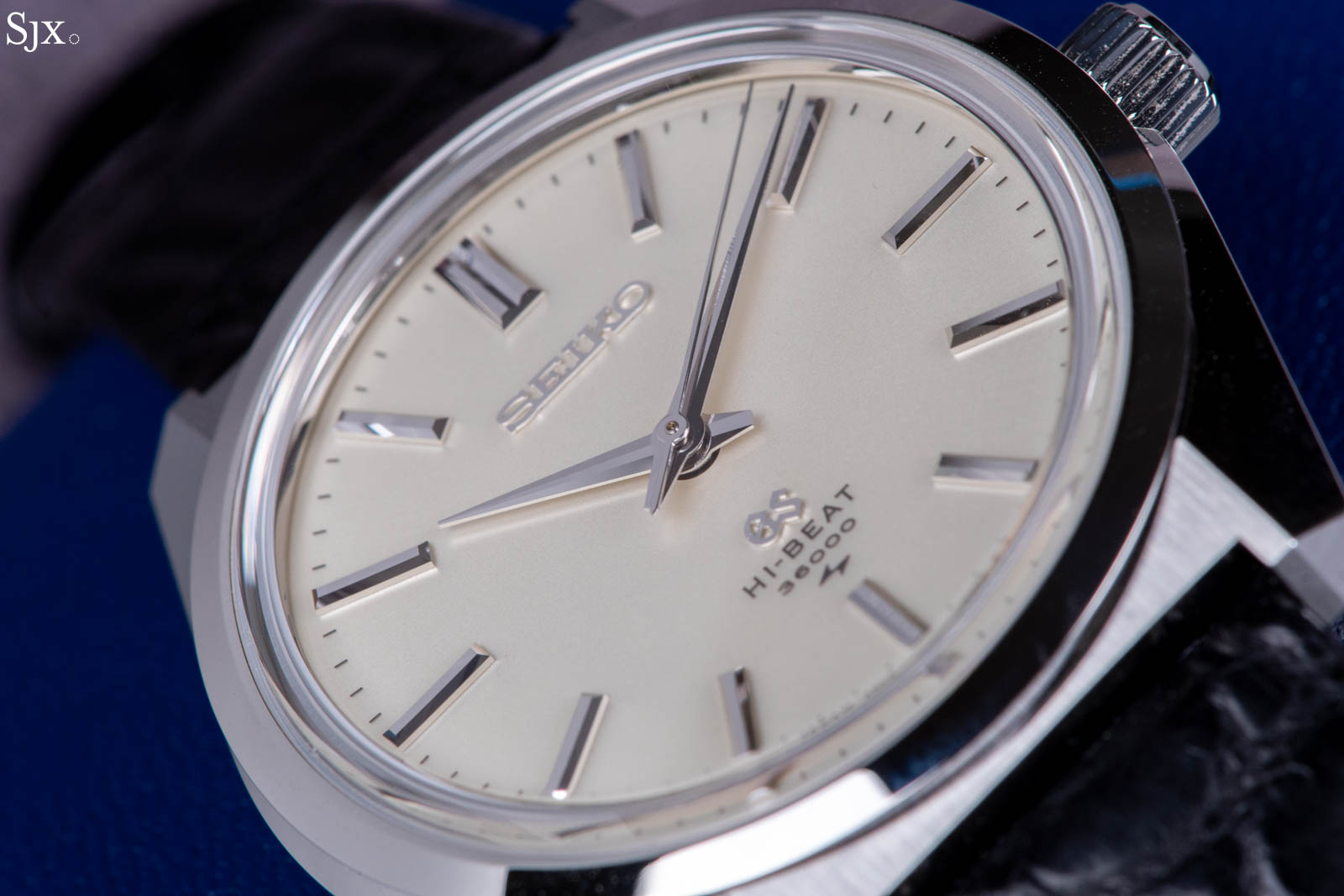
The 45GS was also distinctive being a high-beat watch at 36,000 beats per hour, a feature proudly proclaimed above the lightning bolt logo. This detail is also replicated on the SLGW005, which appropriately employs a modern movement that beats at the same rate.
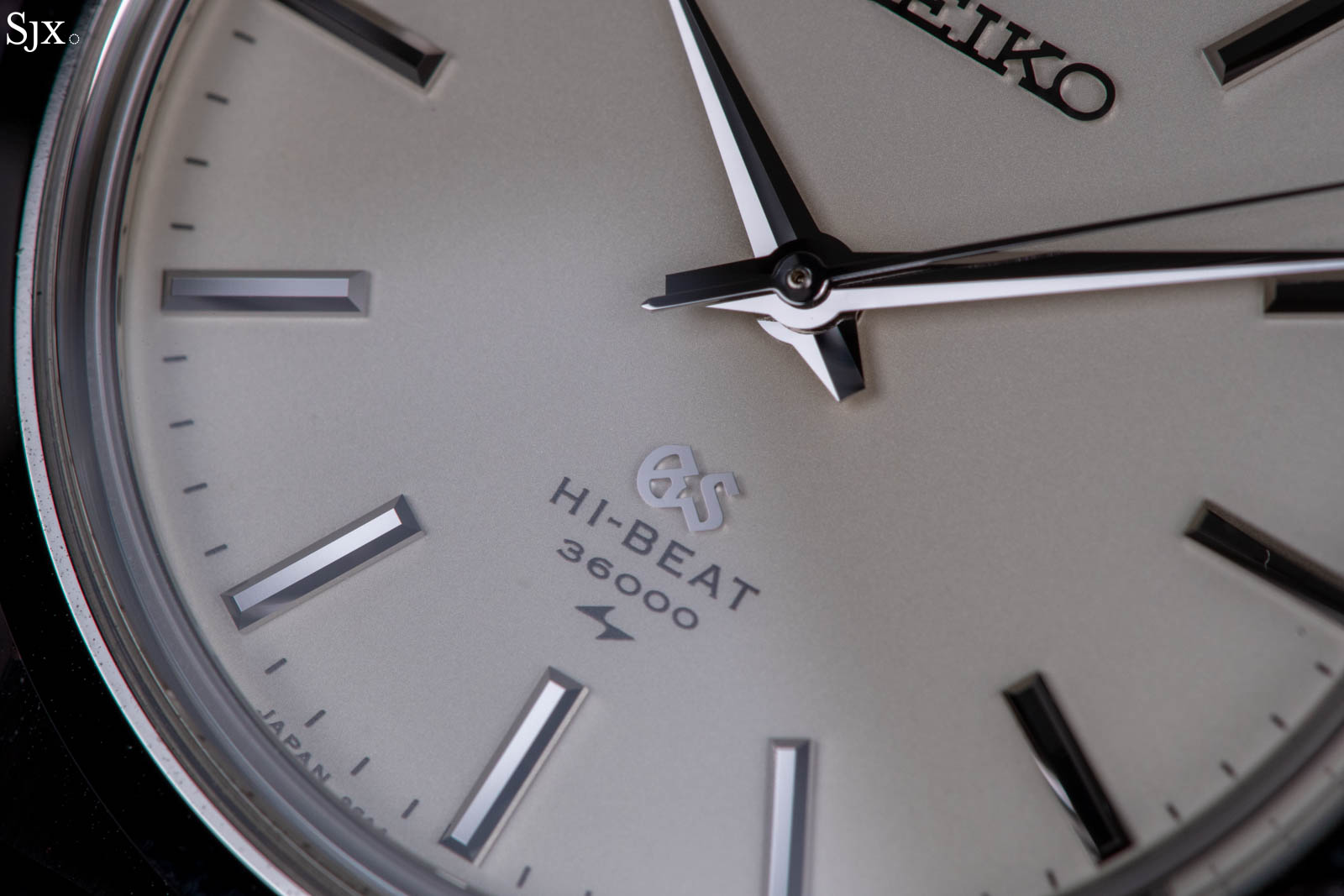
The applied GS logo above the Hi-Beat and lighting bolt logo
The rest of the dial furnishing is typical Grand Seiko quality, which is to say excellent. The applied baton indices are cleanly diamond-cut with picture-perfect reflective facets that easily reflects light for great legibility. The traditional hands, while stamped, also has wide facets along both long edges to create a substantial appearance.
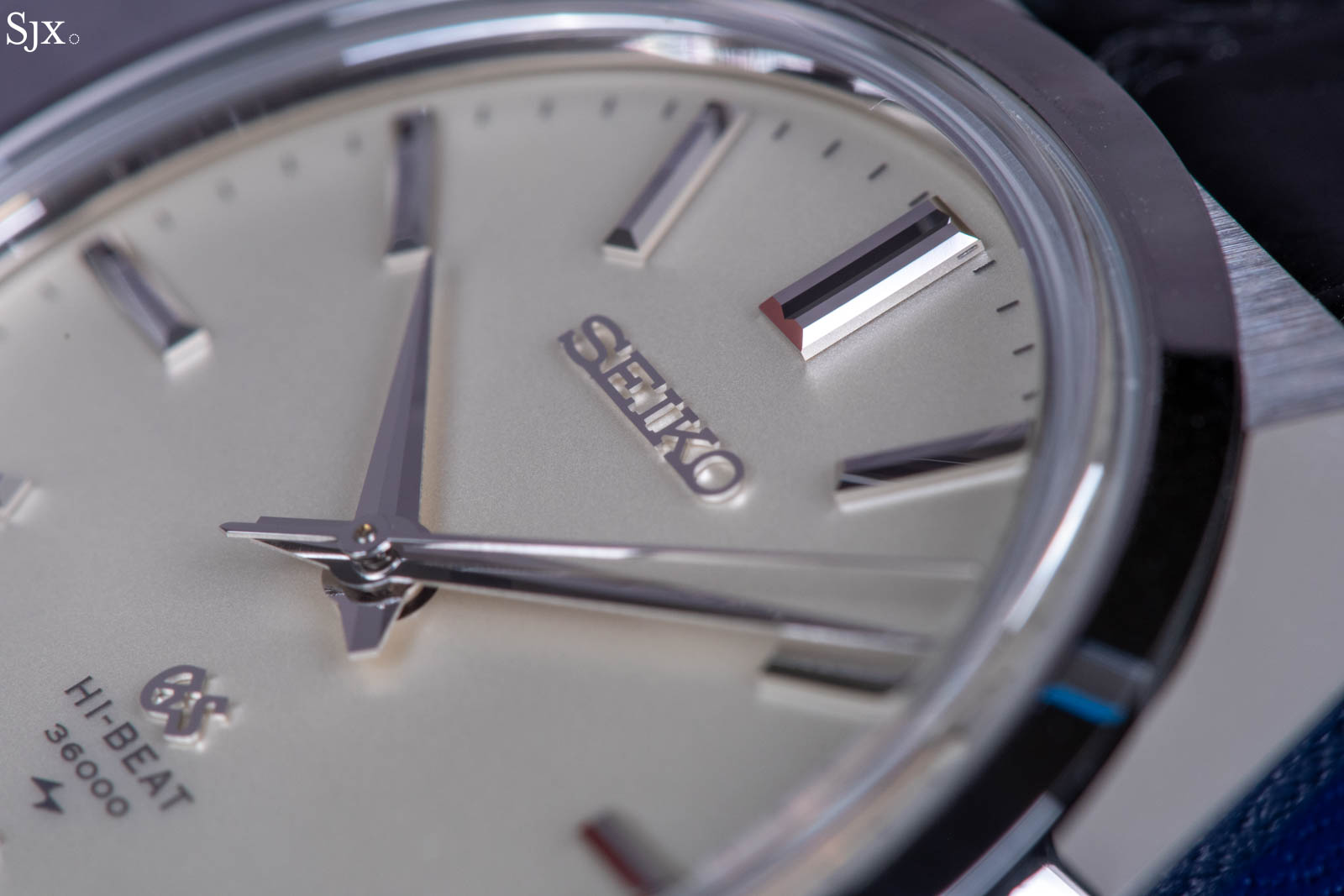
Modern high-beat
While most vintage remakes by Grand Seiko have a closed case back, the SLGW005 has a transparent display back to proudly show the modern movement within – the 9SA4. Equipped with modern features far improved over its predecessor, the 9SA4 takes the place of the cal. 4520 of the vintage 45GS.
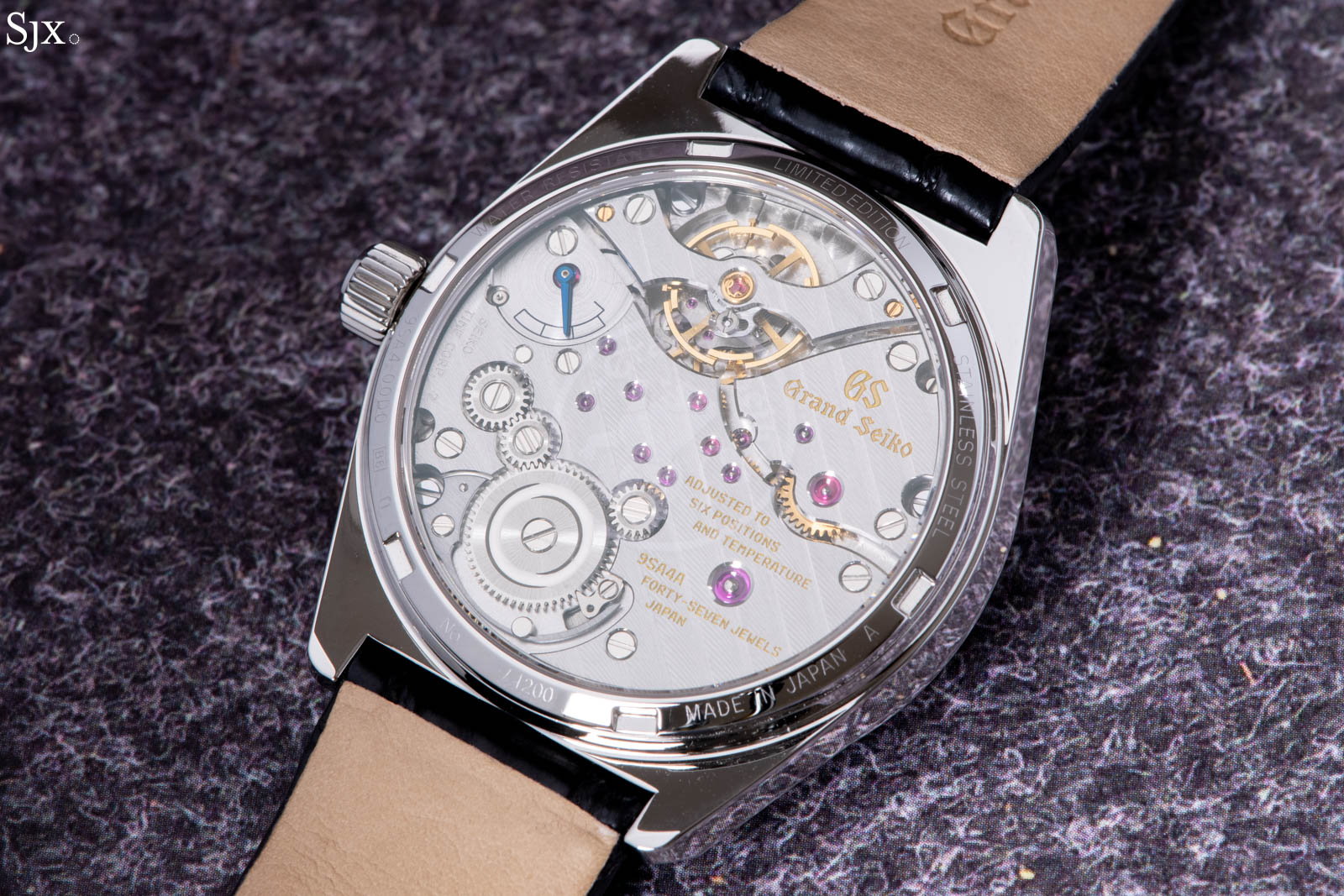
The 9SA4 is derived from the 9SA5 – Grand Seiko’s high-end automatic movement first introduced in 2020 inside the SLGH002. The 9SA5 was then reworked to create the 9SA4 by removing the automatic winding rotor, shrinking down the thickness to just 4.15 mm with a power reserve indicator and reworked aesthetic design.
The 9SA4 made its debut in the “Birch Bark” SLGW002 and SLGW003, with the SLGW004 and SLGW005 being the second release to feature this movement.
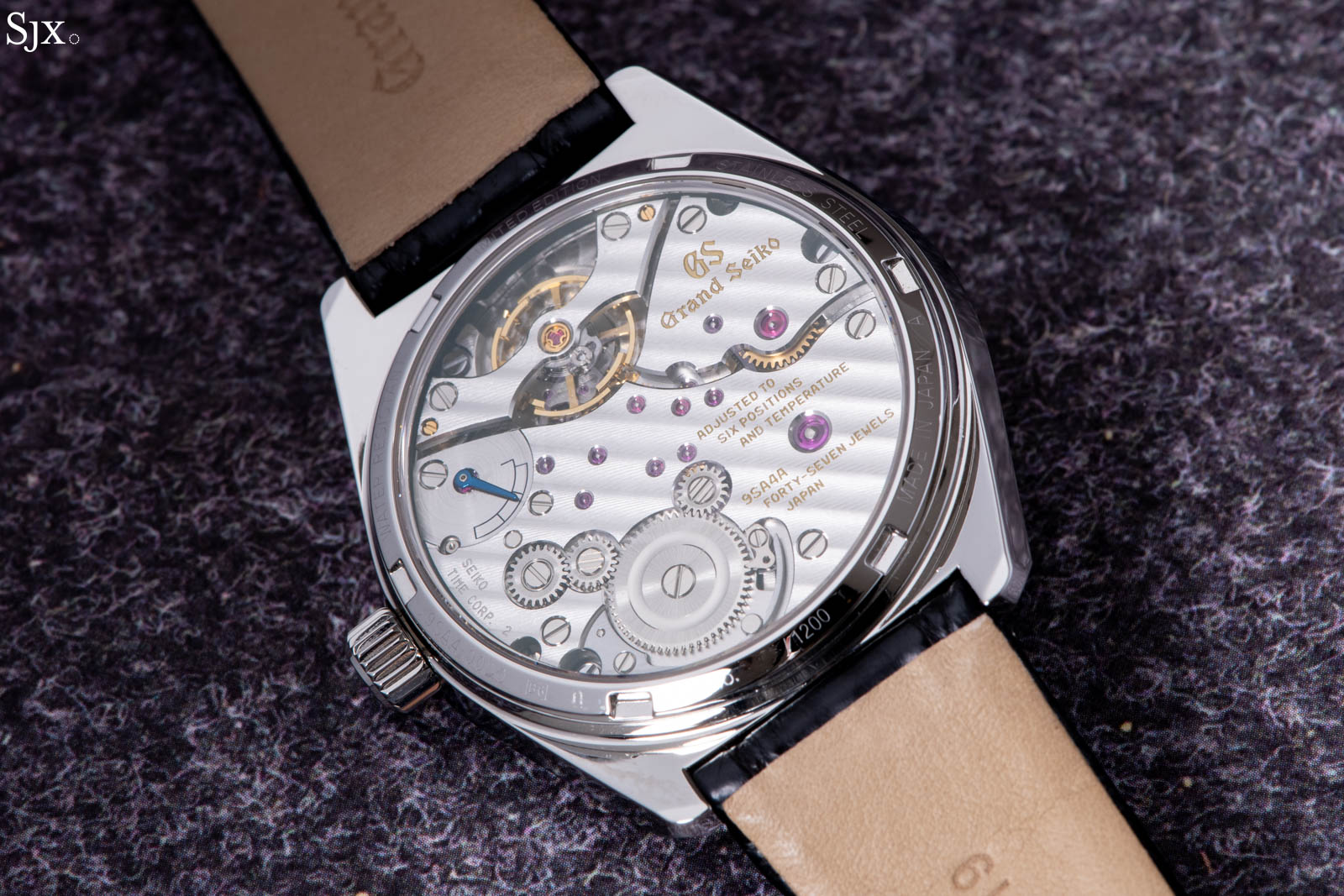
The most unique aspect of the 9SA4 is the proprietary escapement. Dubbed the Dual Impulse Escapement, it is a 5 Hz high-beat hybrid design whereby half the swing of the balance wheel uses the conventional Swiss lever escapement design, while the other half of the swing uses a direct impulse design.
The direct impulse design in short transmit forces from the escape wheel directly tangential to the balance wheel, akin to the well-known George Daniel’s Coaxial escapement.
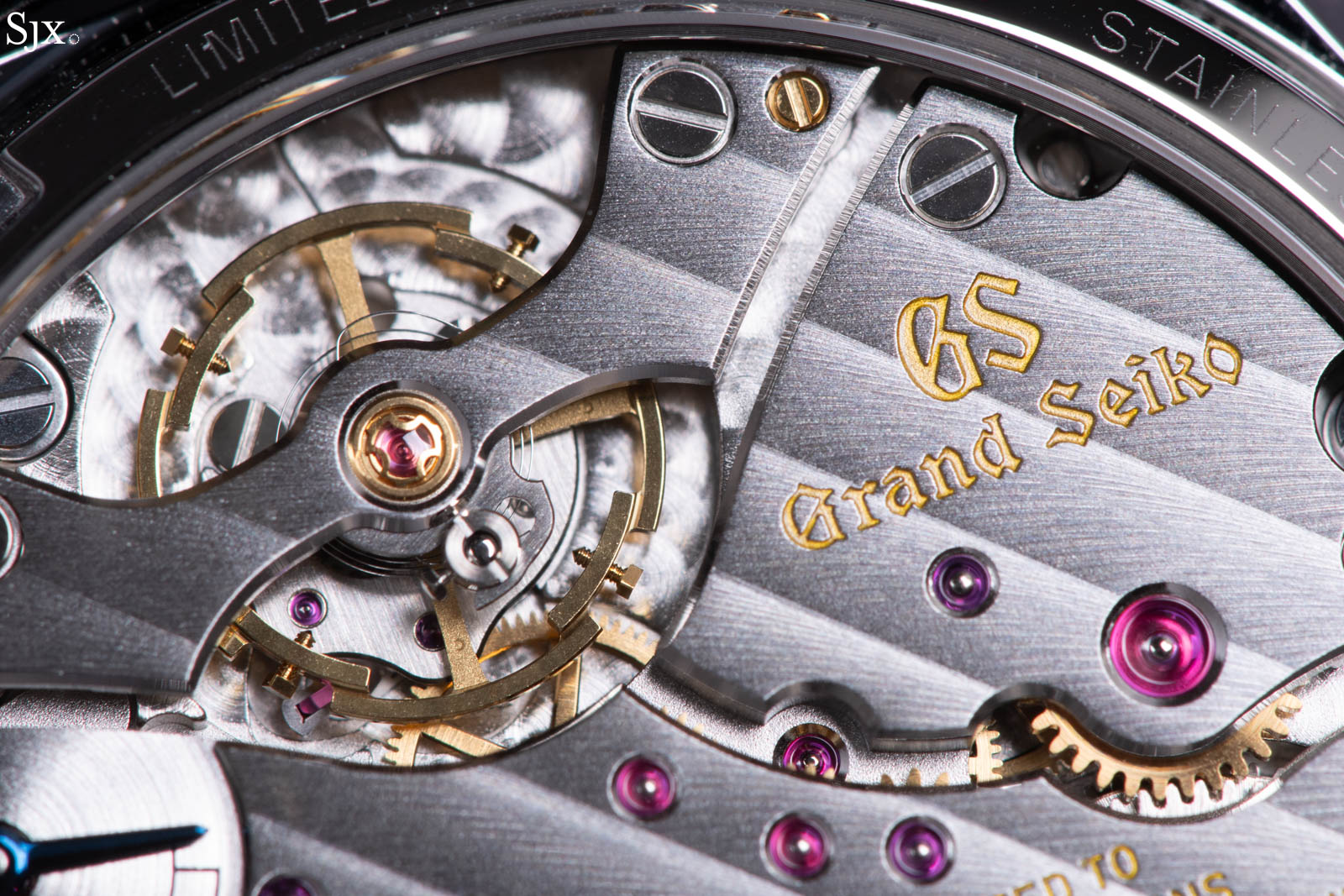
The balance wheel with an overcoil for the hairspring, which is impressive for this price point
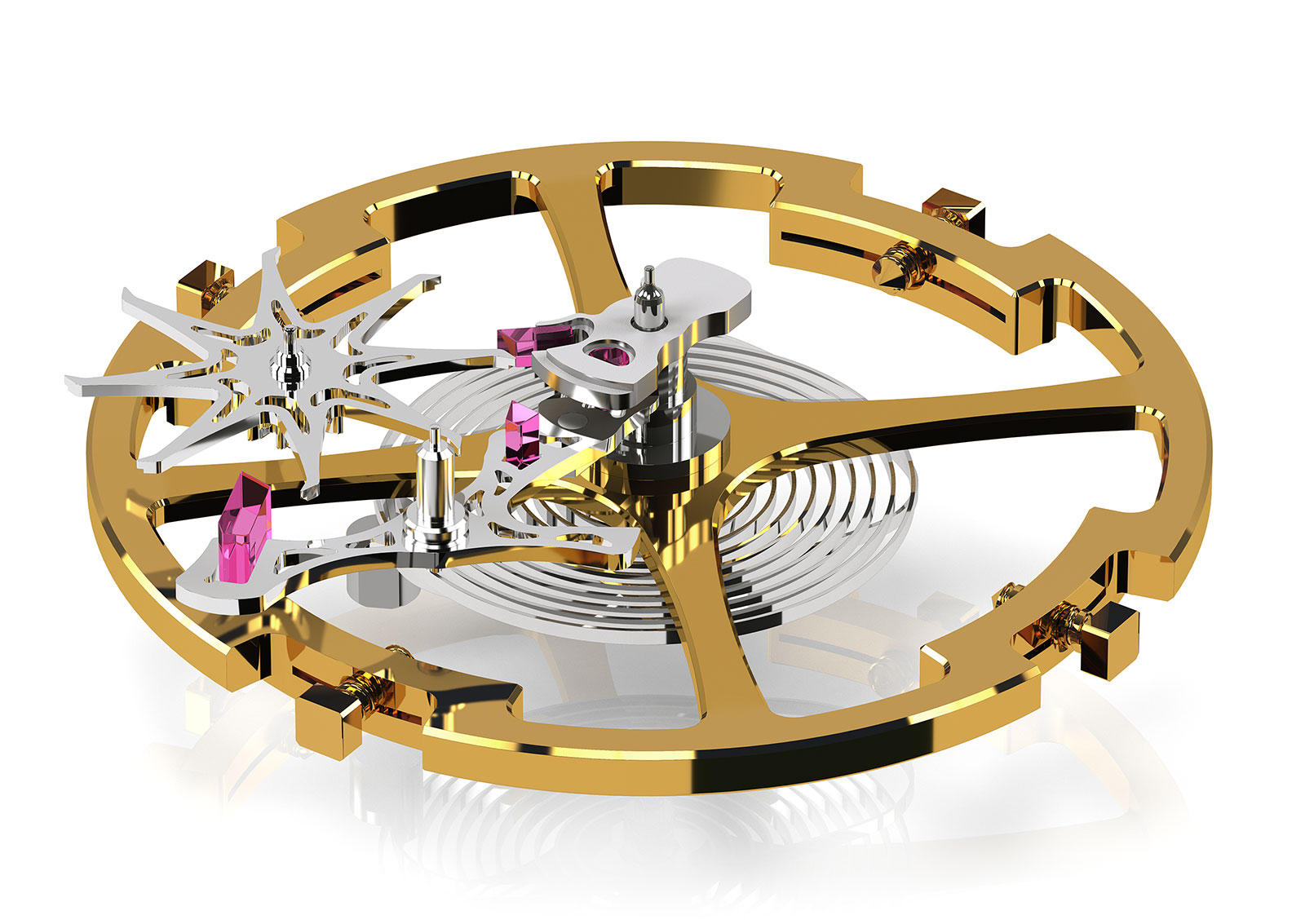
The Grand Seiko Dual Impulse escapement in the 9SAX family
Interestingly, this means that the balance wheel mechanically experiences an asymmetrical swing, thus care must be taken to adjust the balance so that it beats symmetrically (i.e. accounting for beat error).
Arguably however, the standout feature of the 9SA4 is the overall design and user experience as a manually-wound watch. Most notably, the 9SA4 has an exceptionally tactile winding click, which its significance is better understood by exploring the self-winding 9SA5 first.
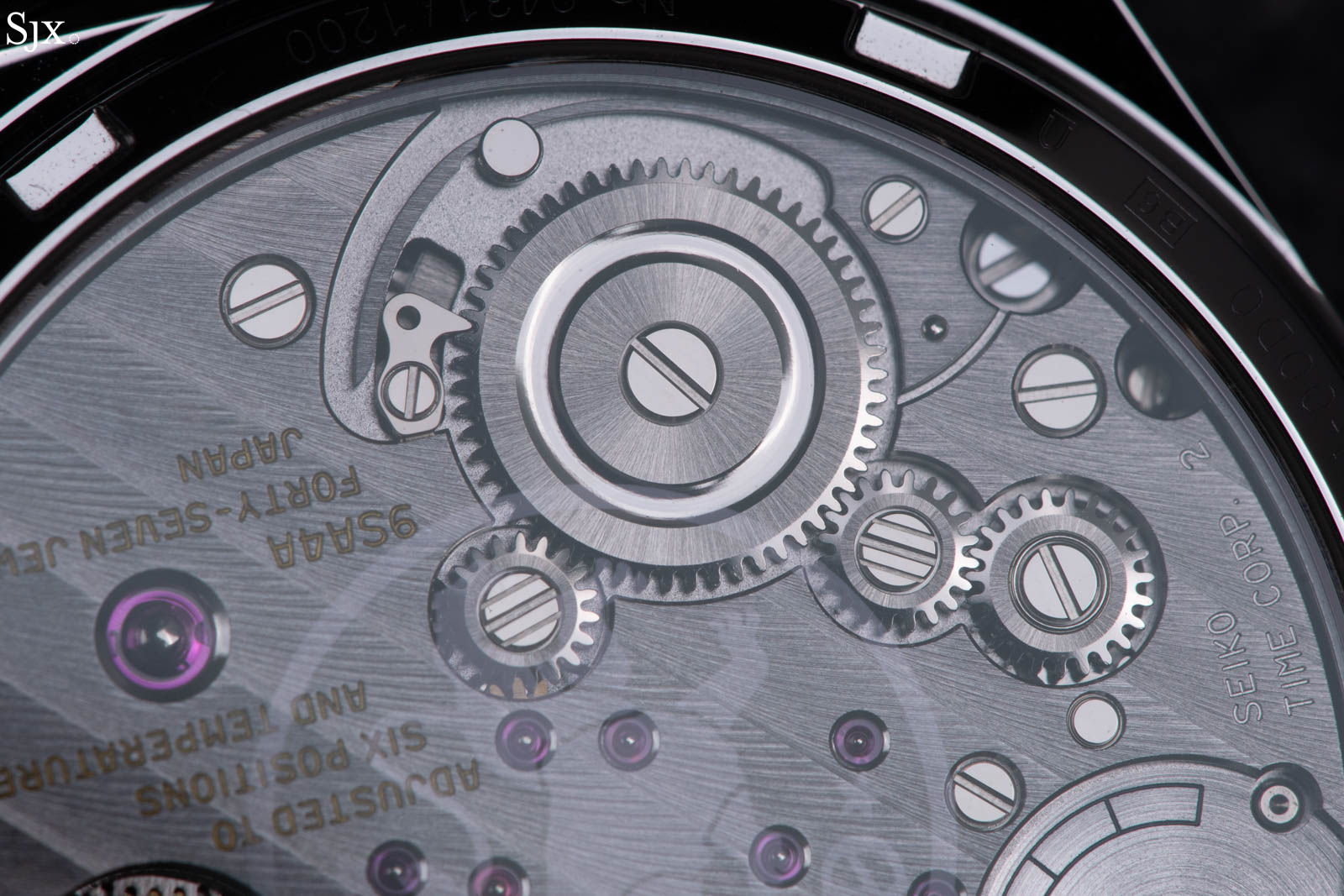
The winding click is shaped after a wagtail bird, symbolic of Morioka city near the Grand Seiko Studio Shizukuishi factory
Automatic movements such as the 9SA5 have a finely graduated click by necessity. This allows the small oscillations of the automatic rotor to progressively wind the mainspring barrel in small doses. Inevitably by design however, this also means that all automatic movements have a winding feel that is tied to this fine graduation click, which feels nothing like a manual wind movement.
By removing the automatic rotor, the 9SA4 is transforming into a manual-wind movement and equipped instead with an especially tactile winding click, visibly seen ratcheting over the ratchet wheel when winding. The widely-spaced teeth of the ratchet wheel and click versus the fine graduation of an automatic click provides the strong tactility that manual-wind movement purists enjoy.
Also, unlike automatic movements, manual wind movements have a distinct recoil when winding the crown. In manual wind watches, the click is often located in a slot which requires the crown to be turned a certain amount, before the click starts ratcheting and the mainspring barrel is wound. This acts as a protection mechanism to prevent the mainspring being overwound when full.
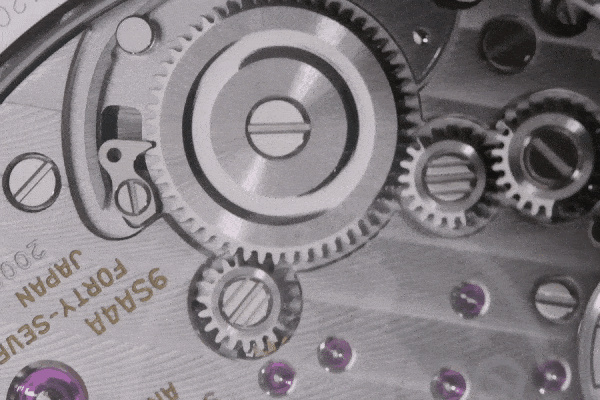
Observe the bird-shaped click initially travelling upwards along a slot before the ratchet wheel slips, winding the mainspring barrel
This is worth mentioning, because the 9SA4 has an exceptionally long recoil which feels deliberate. This means that the crown requires a huge turn, before the ratchet slips and the barrel is wound. This is a design decision that may be a polarising – on one hand, it gives a tactile, manual wind experience that allows the owner to connect to the watch, but on the other it means that winding the movement is little more tedious compared to other movements with a shorter recoil.
That said, the 80 hour power reserve means the watch only needs to be wound every three days in practice. And conveniently, an attractive power reserve display is located on the movement itself, allowing the user to appreciate the aesthetics of the movement while winding.
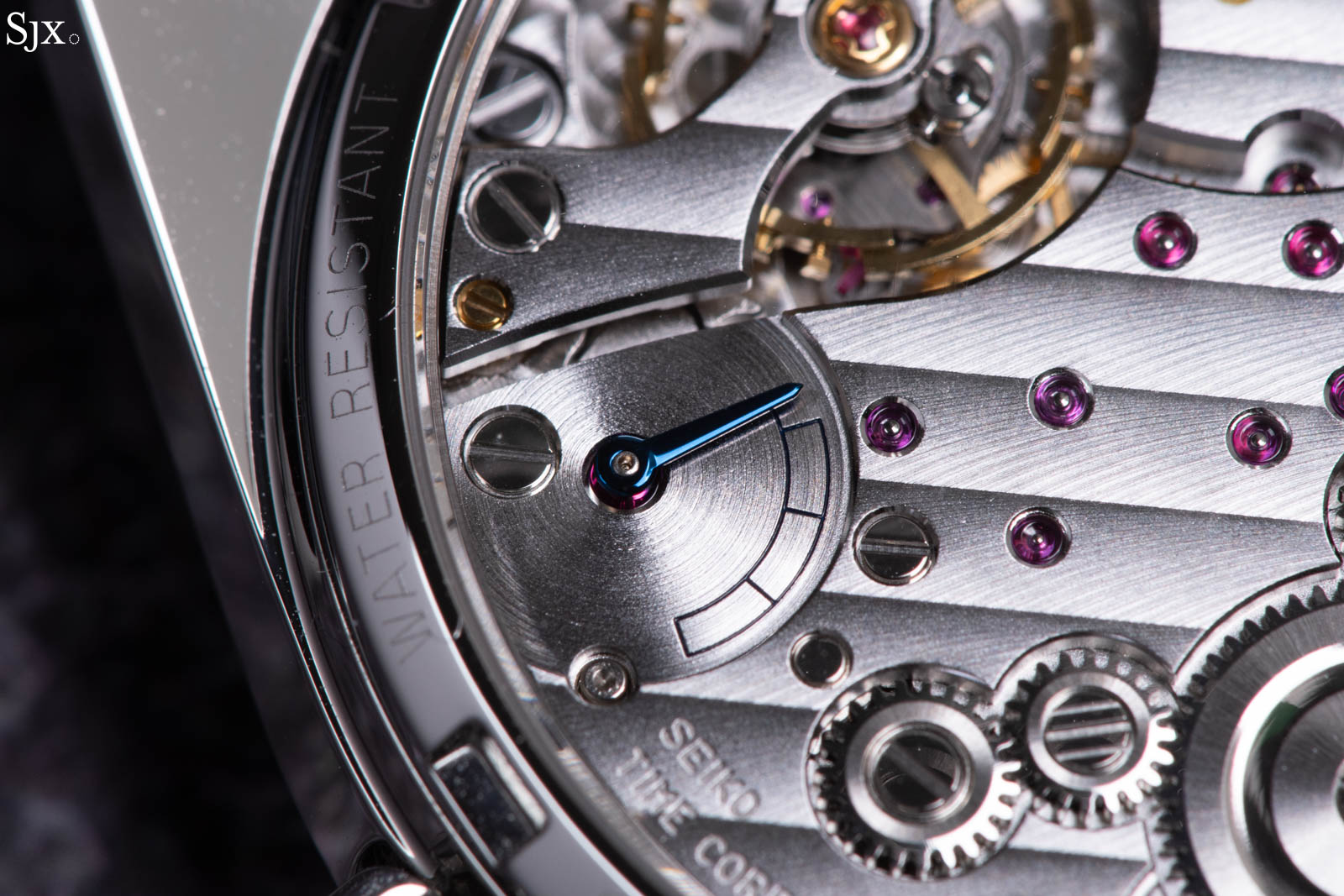
While the movement is aesthetically pleasing, one criticism of the movement is the timekeeping performance. Despite being a modern high-end movement with a proprietary escapement, the accuracy could be better.
Grand Seiko specifies a mean daily rate of -3/+5 seconds per day, but up to -1/+8 seconds per day under “normal usage accuracy”. Anecdotally, my personal example tends towards running faster, between +5/+8 seconds per day. That said, it is always more practical to have a watch regulated to run faster than slower; this is often the norm at many brands.
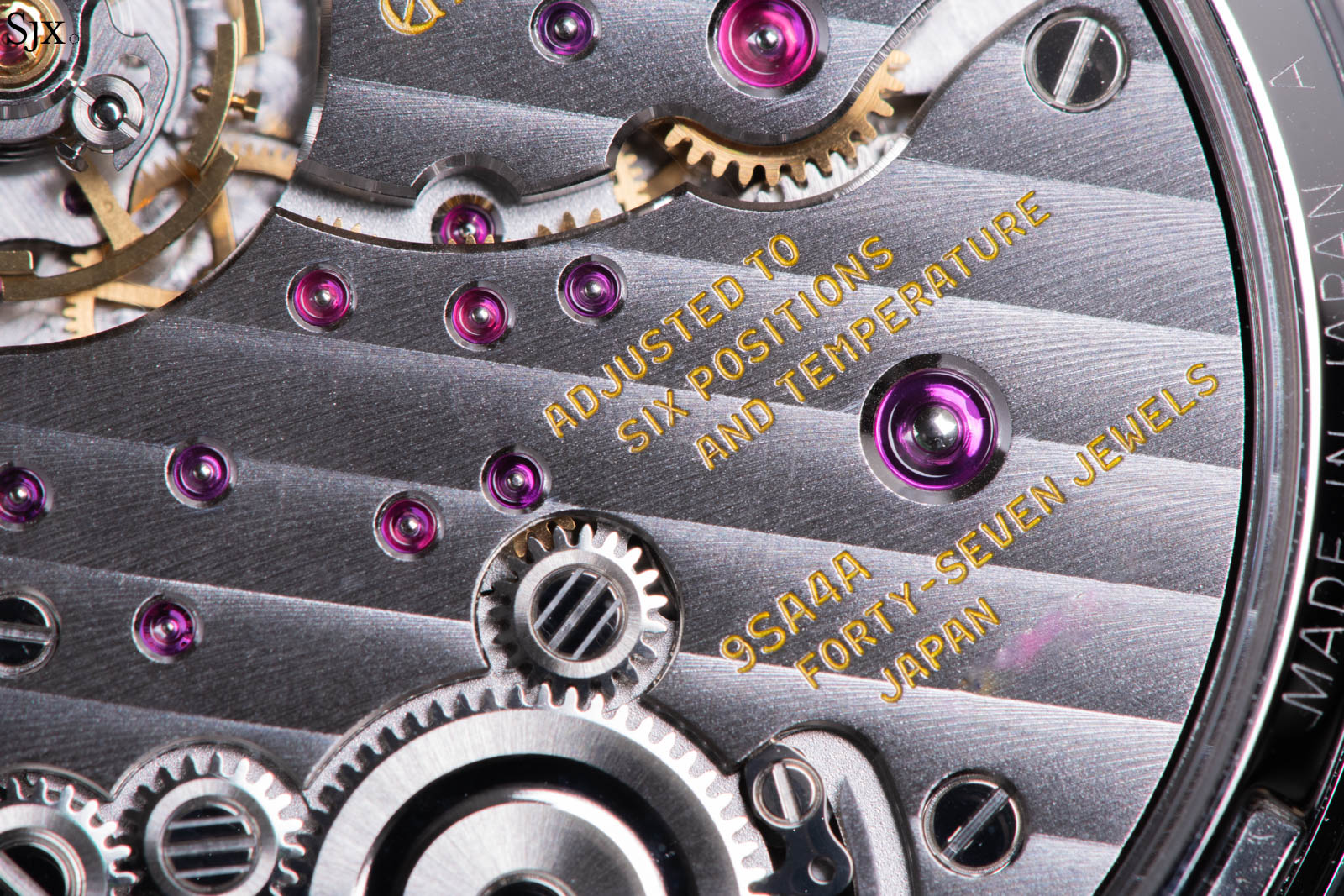
Last but not least, the overall finishing is good, within at this relatively affordable price point. The movement bridges are bevelled by machine, but are neat and even in width. Notably, the power reserve indicator is a radially-brushed recess withing the main movement bridge, which helps break visual monotony. And the large, expansive bridges of the movement are finished with striping similar to Côtes de Genève of Swiss movements.
In fact, the latter deserves a short commentary – It feels that the 9SA4 and 9SA5 are aesthetically styled as a Swiss movement, unlike previous Grand Seiko calibres. One can infer that Grand Seiko is trying to appeal to the broader international market with a universally attractive look, but this means that the new movements loses the unique identity of the previous Grand Seiko calibres.
On the flipside, this makes it easier to compare the 9SA4 to similarly priced Swiss movements such as those by Jaeger-LeCoultre, with tangibly similar quality movement finishing, but costing slightly less than their Swiss counterparts considering the high-end movement features of the 9SA4.
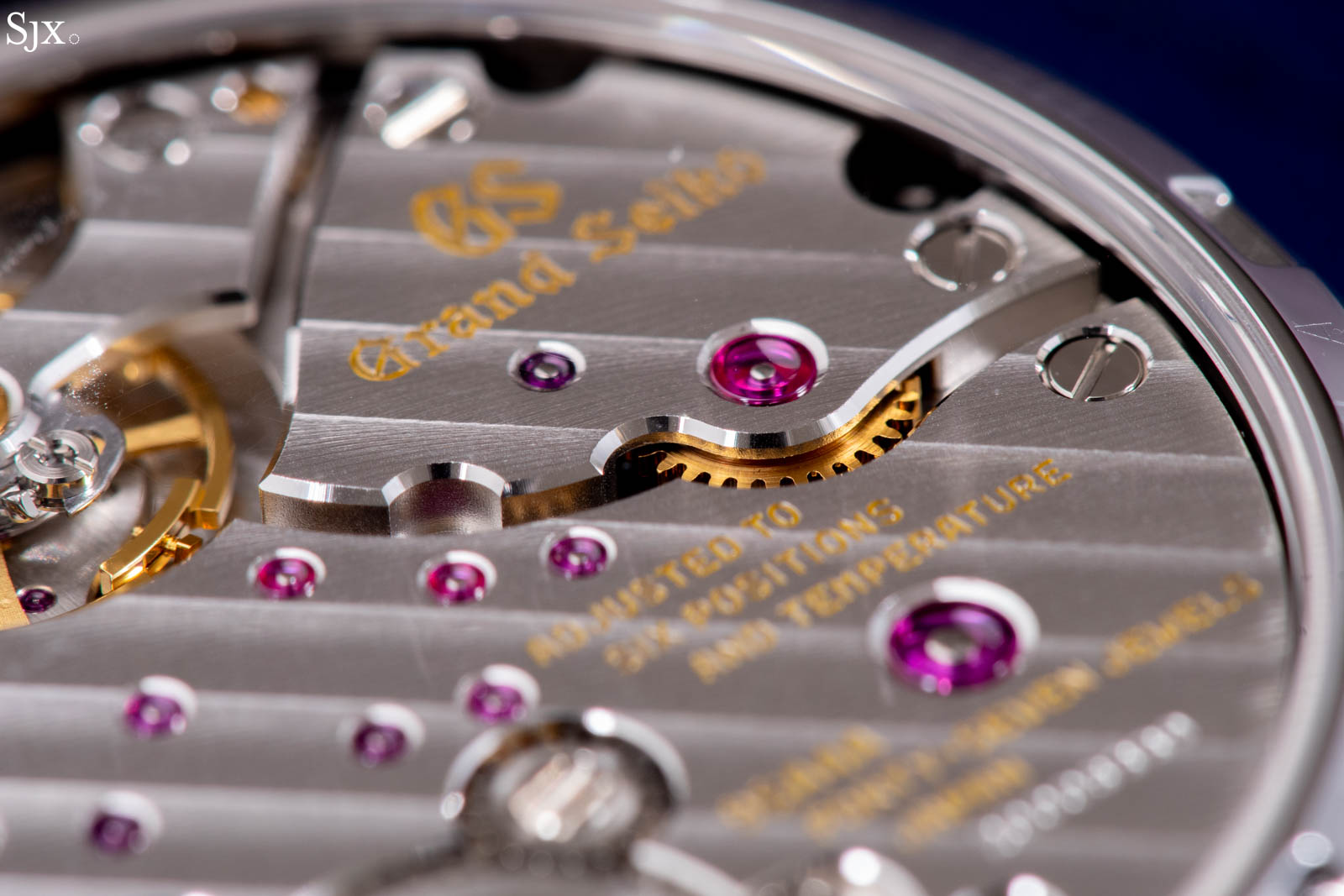
Observe the machining marks of the bevels, which are cleanly done. And the rubies sitting in polished countersinks reflect light for a jewel-like sparkle.
Concluding thoughts
The vintage 45GS was one of the earliest Grand Seiko models with a high-beat movement, a feature that’s now key to flagship Grand Seiko models, so the SLGW005 has big shoes to fill. Fortunately, the SLGW005 lives up to most expectations; it’s an intrinsically attractive proposition.
It is a vintage reissue, but one that is unlike any recent Grand Seiko release. Moreover, the SLGW005 is especially appealing to anyone looking for a brand-new Grand Seiko with a modern movement, but still retaining the traditional aesthetic with details such as the double-signed dial.
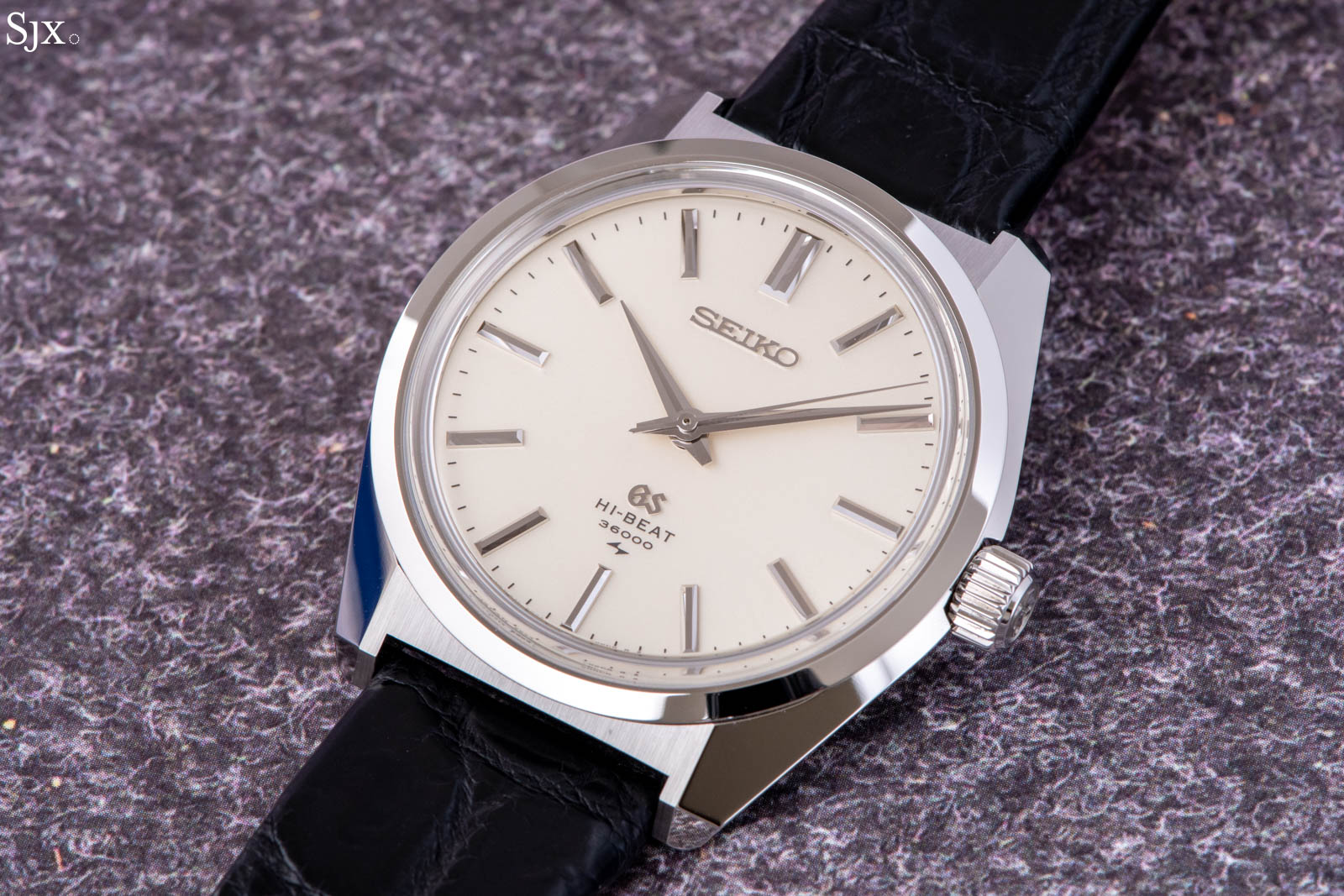
Key facts and price
Grand Seiko Heritage Collection Re-Creation of the 45GS Limited Edition
Ref. SLGW004 (yellow gold)
Ref. SLGW005 (stainless steel)
Diameter: 38.8 mm
Height: 10.4 mm
Material: Stainless steel or yellow gold
Crystal: Sapphire
Water resistance: 30 m
Movement: 9SA4
Functions: Hours, minutes, seconds, and power reserve indicator
Winding: Manual-wind
Frequency: 36,000 beats per hour (5 Hz)
Power reserve: 80 hours
Strap: Crocodile strap
Limited edition: 200 pieces for SLGW004 and 1,200 pieces for SLGW005
Availability: Now at Grand Seiko boutiques and retailers
Price: US$30,000 for SLGW004 and US$9,700 for SLGW005
For more, visit grand-seiko.com
Back to top.